Podcast
How do you guarantee public space in an increasingly divided world?
In this podcast Pieter van Mourik highlights the key projects from Melle Smets, an artist who spent 20 years investigating, infiltrating and designing public space based on local customs. Smets’s projects are realized with a wide vararity of partners and organisations.
In the story we decided to leave them out to keep the flow. For an overview, please check the individual project pages.
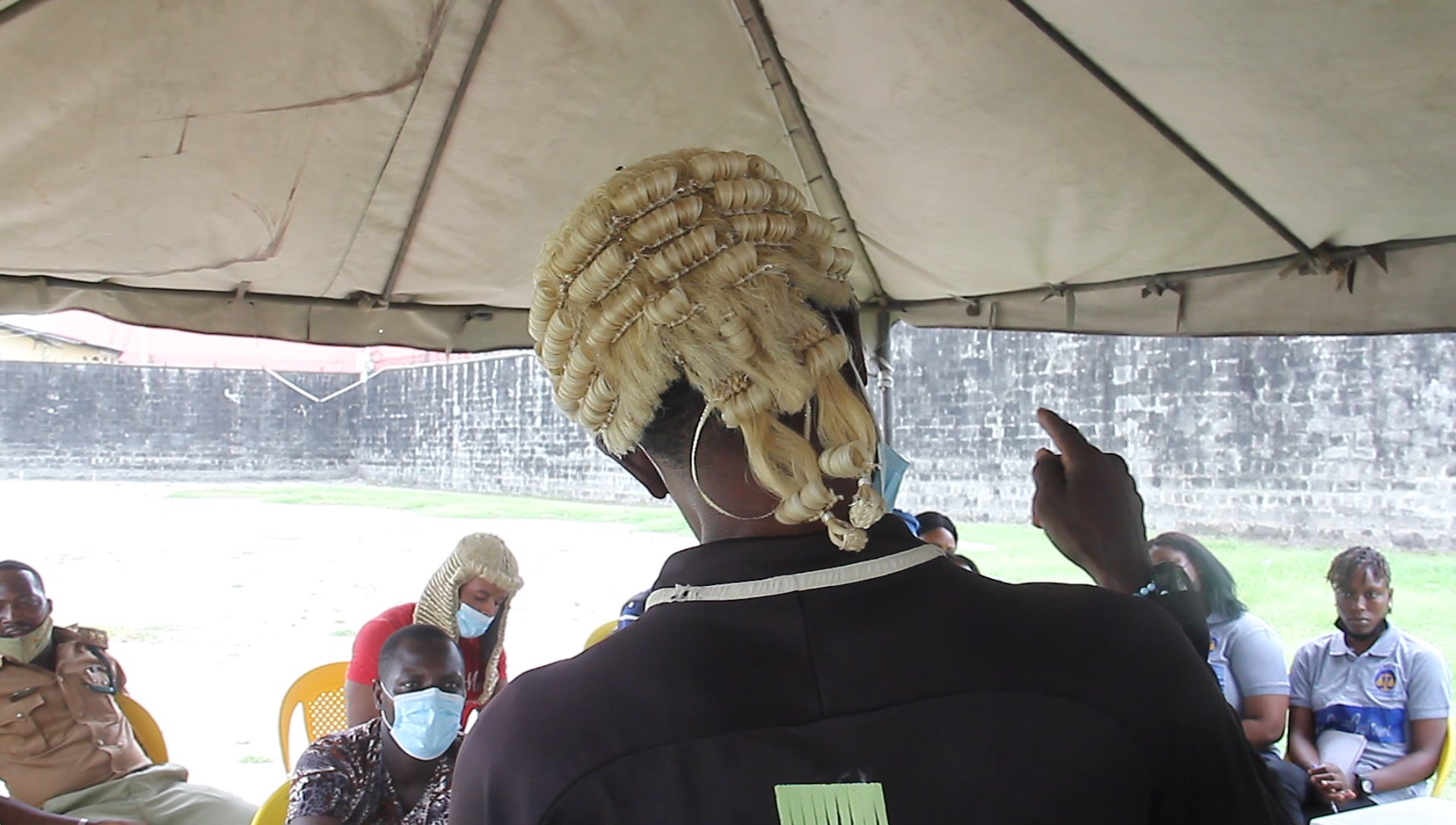
Informal Justice Court
How will inmates of Lagos largest prison create justice?
Podcast (English)
Podcast (Dutch)
Every year, an estimated 15 million people worldwide are incarcerated in prisons without seeing a judge or receiving any legal assistance. This is for example a major problem in Nigeria. In Ikoyi prison, the largest prison in the fast-growing metropolis of Lagos, 90 percent of the prisoners sit in limbo, with no prospect of a speedy trial, with dire consequences for themselves, their families and the overcrowded prisons.Working closely with Nigerian scientists, artists, theatre makers, NGOs, lawyers and awaiting trial prisoners, Aardschap Foundation set up a moot court in Ikoyi prison: the Informal Justice Court. Awaiting trial, prisoners prepare their criminal case with the help of pro bono lawyers and theatre makers.
[masterslider id=”126″]
Fieldwork
The Informal Justice Court action-research project started in 2018 with extensive fieldwork to courts and prisons in Lagos city. Seminars were organised with scholars, artists and professionals working within the justice and prison system. In order to draw these different stakeholders into one room to interact about this multi-layered problem we set up 2 exhibitions, the “Informal Justice Court Room 1 (2018) and 2 (2019)”, hosted by the African Artists’ Foundation in Lagos. The exhibitions visualised the pre-trial detention system and possible hands-on solutions from all over the world. The Informal Justice Court Rooms became an alternative meeting point to develop the proposition of an action research program; Setting up a Moot court inside the prison where inmates act out their own case. As a result, a partnership with the Public Interest Law Partnership (LPILP) and the Theatre department of UNILAG secured the permission from the Nigerian Correctional Services to conduct the project in Ikoyi Prison.
[masterslider id=”80″]
Prototype
In spring of 2021 a tent was set-up on the football pitch in Ikoyi Prison to host the Informal Justice Court where 80 pre-trial inmates acted out their own cases in mock trials. They were assisted by pro bono lawyers and theatre actors. By taking on the different roles present in a formal court, such as judge, prosecutor, defendant and jury, the inmates gained legal knowledge and learned the skills to defend their case in court. Importantly, inmates did not just receive legal help, but they were heard and regained control in their often hopeless situation.
[masterslider id=”78″]
Result
The stories of the participating inmates are translated in the theatre play ‘Objection Sustained’ by director Tunde Azeez. The play was performed in Ikoyi prison and travels across the country to raise awareness among the general public and policy makers about the issue of unnecessary and prolonged pre-trial detention.
On April 14th 2021, we organised the conference Justice delayed, justice denied? An interdisciplinary evening on accessing justice in Lagos at Alliance Française to share our first insights. Alongside a theatre performance about the project, followed by a round table discussion on implementing alternatives to pretrial detention, the Attorney General Lagos State Moyosore Onigbanjo commented on the Informal Justice Court as a way forward in the challenges of the justice system in Lagos.
The Informal Justice Court program is continued for 2022 in Ikoyi prison and expanded to the female Kiri Kiri prison. The aim is to explore how the program can be applied in other prisons in Nigeria and internationally.
[masterslider id=”79″]
Media
Location Ikoyi prison Lagos, Nigeria
Period 2018 – 2022
Team Joost van Onna, Melle Smets (Aardschap), Funmi Ayeni (PILP), Tunji Azeez (LASU)Commisioned by Stichting Aardschap foundationFunding Pauwhof Fonds, Stimuleringsfonds Creatieve Industrie, Knowledge Platform Security & Rule of Law, Netherlands Embassy in Nigeria (Ministerie van Buitenlandse Zaken)Sponsor African Artists’ Foundation, Stroom Den Haag, The Hague Institute for Innovation of Law, Alliance Française Lagos, University of Lagos (UNILAG), Nigerian Correctional Services & VU UniversityPartners Lagos State University, Public Interest Law Partnership, African Artists’ Foundation, Stroom Den Haag, The Hague Institute for Innovation of Law, Alliance Française Lagos, University of Lagos (UNILAG), Nigerian Correctional Services & VU UniversityIn collaboration with “Public Interest Law Partnership: Funmilayo Owuye, Precious Echeozo, Chukwuemeka Monyei, Ojelabi Ayomide, Ogunbiyi Michael & Oluwatayo Olubukola
Theatre team Prof. Tunji Azeez (LASU), Toritseju Ejoh, Segun Adefila, Saheed Azeez, Bagbenga Bamodu & Elerubo Theresa
Pro bono lawyers and firms Akinremi Olaoluwa, Judy Imasuen, Joseph Oriyomi, Dipo Famodimu, Oluwadunsin Komolafe, Zeniath Abiri, Abdulwasiu Esuola, TAYO OYETIBO LP, Prisoners’ Rights Advocacy Initiative, BABGBENGA BAMODU, ENITAN LEGAL PRACTITIONERS, ABIRI MUSTAPHA & CO, SITUS PARTNERS, DELE OJOBEDE & CO, DELE OJOGBEDE, THE OPTIMIST ATTORNEYS, TAYO OYETIBO LP, WALL & ACE, ASTER LAW, OLAOLUWA AKINREMI & CO, J.O ABIODUN
Internship at Aardschap Oluwadunsin Komolafe (Prisoners’ Rights Advocacy Initiative), Salome Ochmanek, Abril Fernandez, Larissa Aarzen, Luna Cabrera Suarez (VU masterclass International Law)Website design, text & editing: Benjamin Earl, Kirsten Spruit & Bart van Zessen”
Special thanks Rotimi Oladokun, Olatubosun O. Osituga, Amos Ibrahim, Charlotte Langhorst, Azu Nwagbogu, Tobi Oshodi, Princess Ayoola, Nguveren Ahua, Neec Nonso, Paul Lompech, Bashir Adamu & Tunde Kalaro
…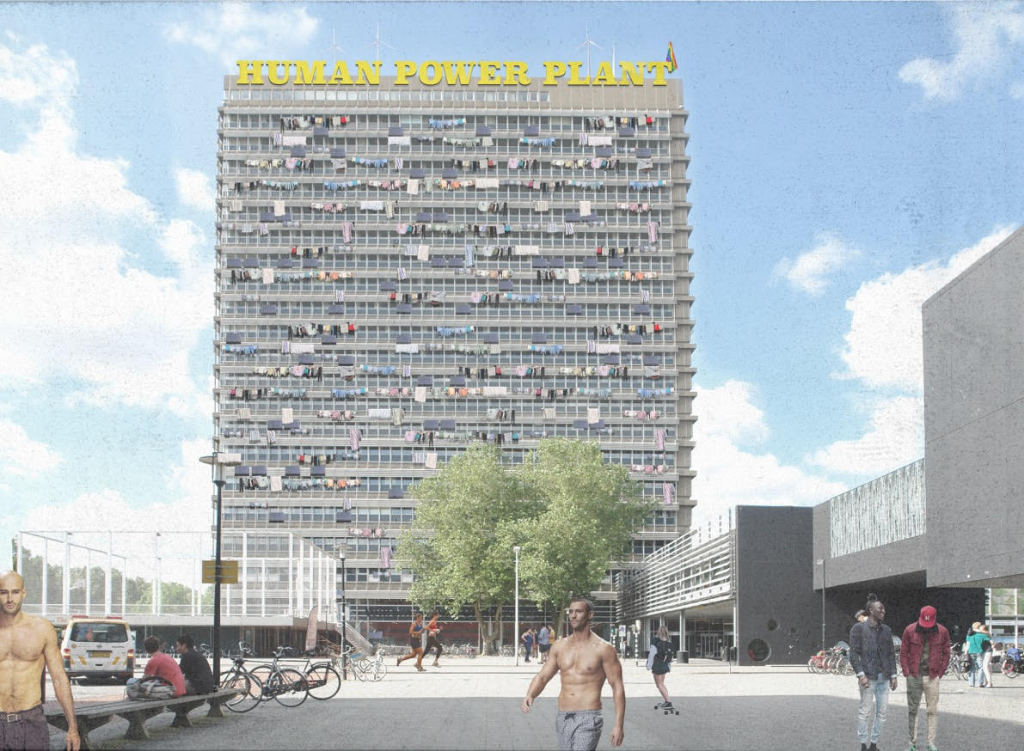
Human Power Plant
Human power is the most sustainable power source on Earth.
Podcast (English)
Podcast (Dutch)
Human Power Plant is an artistic research project into a human powered society. Every project starts with a site specific human power scenario. The scenario is the basis for prototyping human power plants to engage the community. The first scenario was a student housing building on the University Campus of Utrecht. The second scenario was a dredging colony projected in the former peet mining wetlands in Friesland. The third scenario is the House of the Future in the densely populated residential area Bospolder Tussendijken in Rotterdam.
Why human power?
Unlike solar and wind energy, human power is always available, no matter the season or time of day. Unlike solar panels, wind turbines, and batteries, humans don’t need to be manufactured in a factory. Unlike all other power sources, human power increases as the human population grows. Making human power the benchmark for our energy supply and consumption is the most sustainable energy source on earth.
Scenario 1:
2017 HUMAN POWERED STUDENT HOUSINGThe Utrecht Science park wants to become a sustainable campus, but also expand with student housing, brainparks, research labs, and new hospitals. The Human Power Plant seized the opportunity and developed a scenario in which the 22-story vacant Van Unnik building is transformed into a student house with 750 rooms. The building is completely independent of fossil fuels – all energy is supplied by the students themselves.
[masterslider id=”110″]
ScenarioThe students limit their energy consumption by jointly organising household tasks and by using energy-efficient technology. This includes both high-tech (such as LED lighting) and low-tech (such as thermal underwear). Three floors are occupied by a gym where all students produce electricity and heat for a few hours a day. Human waste and kitchen waste are converted into biogas for cooking.
[masterslider id=”111″]
Prototype
The Human Power Plant is an off-the-grid renewable energy source that produces electricity, compressed air, and water under pressure. This was a miniature version of the one needed to supply the 22 levels of the Van Unnik student building. Students could test their energy production and their physical and mental endurance. All the fitness machines had a unique sound when students worked out. Consequently, each time the Human Power Plant was operated, a work song was composed. The installation was further developed and exhibited in Deventer, Antwerpen, Rotterdam, and Groningen.
[masterslider id=”112″]
2018 DREDGING COLONY FRIESLAND
For the second scenario, the Human Power Plant headed to Friesland. The debate on energy transition mainly focuses on domestic energy consumption and transport. Industry and infrastructure are hardly discussed. In Drachten, we therefore put the dredging industry under the magnifying glass. For centuries, the Netherlands was dredged by hand. Today, this essential maintenance of the landscape is entirely dependent on fossil fuels. The Friesian landscape was excavated by hand for peat mining. This handmade landscape is still intact and can be the blueprint for the Netherlands for a human powered dredging system.
[masterslider id=”113″]
Scenario
The Frisian landscape, after centuries of reclamation, has been transformed into a Mangrove Forest, accessed by a canal network connecting small settlements on artificial mounds. The waterways are maintained by a colony of dredgers who, in exchange for maintaining a stretch of canal, have a home in the wilderness. The wilderness is a spectacular natural area for nature-loving tourists to camp, fish, and canoe. The Dredging Colony is organised according to the Frisian tradition of co-opting. Together they set the price of firewood, fishing, and camping. The flagship of the corporation is t’Juffertje, a human powered dredger to keep the deeper channels navigable.
[masterslider id=”114″]
PrototypeWe organised an experiment in which 1 m3 of mud was removed from a canal in the traditional manner. Based on this, we calculated that about 800 people could keep the province of Friesland navigable. Because the local residents showed no interest, we found dredgers in the asylum seekers’ centre. Manual dredging is not financially viable, so we give asylum seekers a piece of land next to the piece of canal they maintain.
[masterslider id=”115″]
Scenario 3:
2020 HUMAN POWERED NEIGHBOURHOOD
Bospolder-Tussendijken was once built for dockworkers in the Rotterdam harbour. The neighbourhood consists largely of social housing and has been selected as one of the testing grounds for the energy transition: all households will be connected to a heat grid in the harbour. This system requires a huge investment in infrastructure and will stay dependent on the heat supply of the industry. The Human Power Plant developed a scenario for the neighbourhood in which energy production relies entirely on locally available resources: manpower and biomass, supplemented by wind and solar power when weather conditions are favourable.
[masterslider id=”116″]
ScenarioIn the climate-neutral BoTu, all household tasks are organised communally. Neighbourhood squares have become commons, equipped with public kitchens, canteens, bathhouses, washrooms and toilets. All common facilities are under collective management. Residents have a few days of energy statute labour and thus work only half of the week in the regular economy. Yet the residents’ purchasing power has increased because they do not pay for the neighbourhood facilities. Food and firewood are produced within the neighbourhood, minimising the need to import. Energy consumption has fallen radically, but well-being has increased just as spectacularly.
[masterslider id=”117″]
PrototypeThe House of the Future: BoTu on Human Power is a workshop for residents, artists and professionals to prepare for the energy transition to human power; the most sustainable energy source available. Two or three times a year, we organise an Energy Agora: a mini-festival around the energy needs in everyday life such as for cooking, heating, washing, dressing.
[masterslider id=”118″]
Location Various locations: Galerie nationale du Jeu de Paume Paris, (Mei 2017), Science Park Utrecht (2017), Kunstenlab Deventer (Augustus 2017), Archipel Antwerpen (2017), Museum Booijmans van Beuningen Rotterdam (2018), Sluisfabriek Drachten (2018), Bospolder Tussendijken Rotterdam (2019 – in process)
Period 2017 – 2021Team Kris de Decker & Melle Smets
HPP – Human Powered Student Housing
Year 2017Location Science Park, UtrechtTeam Kris De Decker, Melle Smets, Golnar Abbasi, Arvand PourabbasiCommisioned by Science Park UtrechtFunding City of UtrechtPartners Go Ape, ISA bewegingsanalyse, Low Tech Magazine, Olympos, Stichting Science Park, Instrumentatie Beta, HU Faculteit Natuur en Techniek, HU Faculteit Digitale Media & CommunicatieIn collaboration with Realisation and production: Mark Thur (Planemos)Education advice: Caroline Maessen, Pim RooymansTechnical advice: Jos van Gemert (Instrumentatie BETA University Utrecht),Sport advice: Franklin van Doesburg & Robin Bhaggan (ISA bewegingsanalyse), Dirk Wijnalda (Olympos), Harry de Jong, William van Tiggele, David White
HPP – Dredging Colony Friesland
Year 2018Location Sluisfabriek, DrachtenTeam Kris De Decker, Melle SmetsCommisioned by TAAKFunding Municipality SmallingenlandPartners COA Drachten, Craftwurk Smelne’s erfskip, Maatschappelijke Onderneming Smallingerland, Leerbedrijf ROC Friese PoortIn collaboration with Realisation and production: Mark Thur (Planemos), “Theo Tegelaers, Nils van Beek (Curatoren), Simone Kleinhout, Charlotte Bijl (Projectleiders)Models & Drawings: Melle SmetsText: Kris De DeckerPhotography: Philippa DriestReporter: Bram EsserGraphic design: Golnar AbbasiParticipants dredging workshop: Erik Stoute, Hamad Abdulyahman, Serwan Khder, Oham Raad, Tijani Damilola, YounnoussSet production: Crijn MandemaSpecial thanks to Gea Smidt, Eduard de Ridder, Merit Prins, Klaas Hendrik Rozendaal, Nicky Korte, Amanda v/d Veen, Tjerk Kwast, Trea Westra, Jan Zandberg, Rik van der Wijk, Roelof Hazelhoff.
HPP – House of the Future
Year 2020-2021Location Bospolder-Tussendijken, RotterdamTeam Kris De Decker, Melle Smets, Klaas BurgerCommisioned by Museum Boijmans van BeuningenFunding IDOLS, City of RotterdamSponsor Theatercollectief Swalbe, LC Packaging, WeWattPartners Academie voor Beeldvorming, Bakkerij De Eenvoud, Delfshaven Coöperatie, Delfshaven Energie Coöperatie, Eneco, Enpuls, Havensteder, Het Taalbedrijf, Hosman Consultancy, Huurdersraad West, Low-tech Magazine, Media Atelier Delfshaven, Museum Boijmans Van Beuningen, Voor Goed | Rotterdam Impact Agency, Zelfregiehuis Delfshaven, Stichting Aardschap, Stichting Pauw, Stichting WijkcollectieIn collaboration with Golnar Abassi, Ayse Alcinkaya, Selda Atmaca, Willem Beekhuizen, Mama Bouziani, Florian Braakman, Ayse Yalcinkaya Budaklier, Sylvia Busby, Patricia Ceysens, Teun van den Ende, Zakia Erkarchoui, Hayat Errakba, Bart Groenewegen, Marieke Grund, Ayaan Hassan, Prof. dr. Clemens Hosman, Thamar Kemperman, Annemartine van Kesteren, Hans Koedood, Tara Lewis, Carmen Martinez Noya, Sarra M’saiss, Moenne van la Parra, Andre Pijnappel, Hugo Post, Arvand Pourabbasi, Miriam Roelofs, Moni Siegfried, Michael Siem, Javad Shiamizadeh, Houria Tourich, Audry Wilson, Wilma van der Wilt, Fatiha ZaboutiSpecial thanks to Lotte van Diggelen, Maria Kluijtenaar, Michel van Leeuwen, Jaques Stoppelenburg
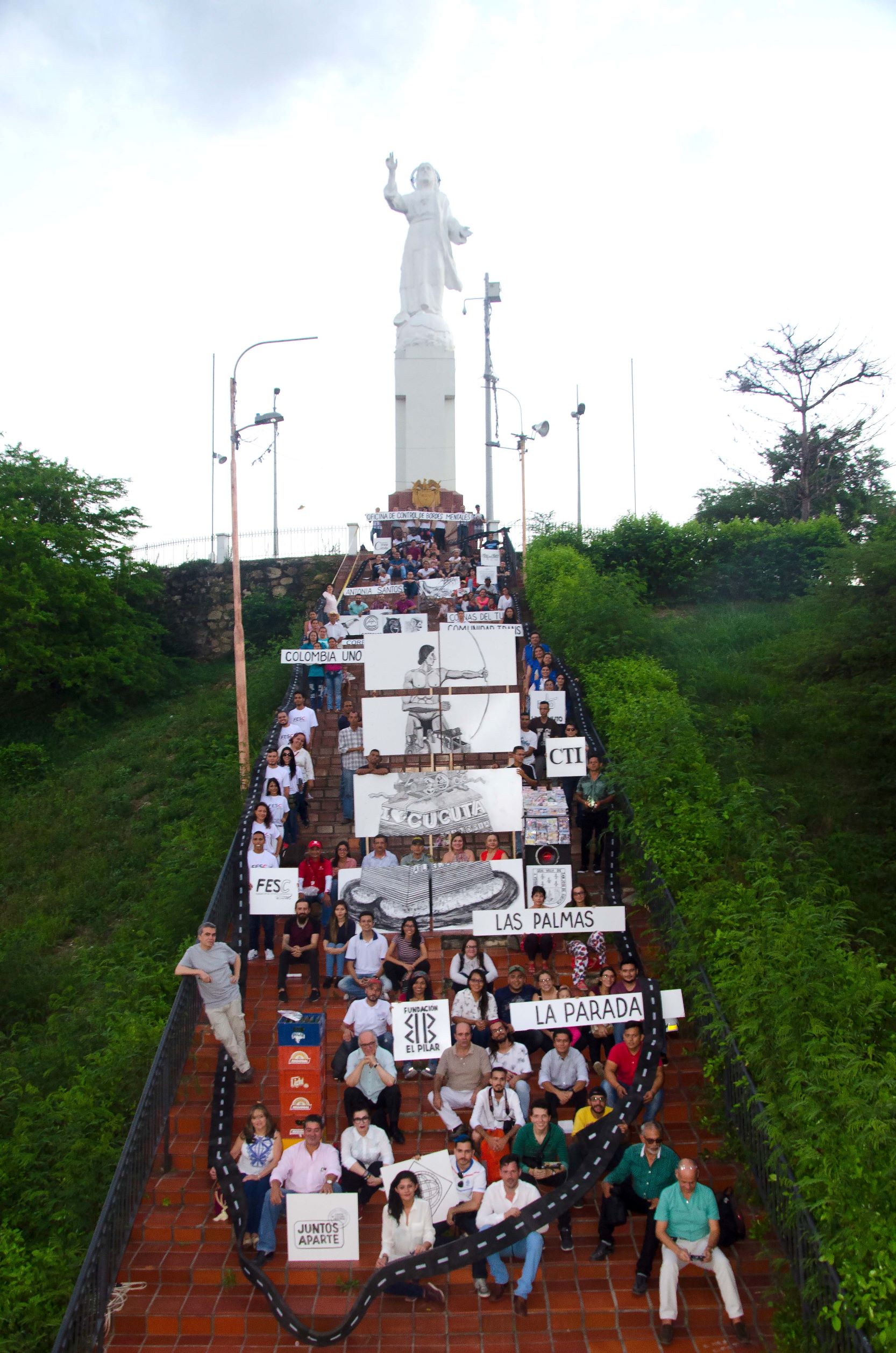
Mental Border Control
Investigates the new frontier of emerging borders.
Podcast (English)
Podcast (Dutch)
Since the Iron curtain fell in 1989, new physical borders emerged all over the world. The loss of an old world order sparked new conflict zones. Today building capacity and surveillance technology is so advanced it becomes attractive to Nation States to raise more, longer and stronger walls. What effect do these walls have on our habitat?
Cúcuta is a city on the border between Colombia and Venezuela. This is the place to learn how communities live with a border in their backyards. When the Maduro regime unleashed the migration crisis in 2016, the Mental Border Control, was born as an artistic research project to locate, visualise, and learn from the mental borders of the communities living in Cúcuta.
[masterslider id=”63″]
2017 Fieldwork
The research started in 2017 with the invitation of the “El Pilar” Foundation to establish a context laboratory for the first BIENALSUR ‘Together apart’. The lab had the objective to establish the basis of what will be the Centre for Border Studies in Cúcuta.
As a first stage, the MBC team explored Cúcuta for five weeks asking the question: What is the effect of the border on communities, animals, products and things? Hidden beneath the surface, we discovered how locals have found many ingenious ways to benefit from living on the border. The informal city undermines, penetrates and blooms behind the formal borders. The MBC team interviewd twelve Cúcutanians. Watch the video’s on youtube.
[masterslider id=”64″]
The next step was to dig deeper under the surface to discover how locals have found many ingenious ways to benefit from living on the border. Here are some drawings of typical border jobs. that formally don’t exist.
[masterslider id=”70″]
Collective Action
As a final result of the context lab we organised a group selfie at the Cristo Rey monument in Cúcuta on the 5th of December 2017. This monument was erected after the city was destroyed by the earthquake of 1875 and commemorates the collective spirit of the cucuteños who rebuilt the city together. At the time of the event, the monument was considered too dangerous to visit. As a symbolic act 115 people from different communities crossed this collective mental border in Cúcuta by making this photo together.
[masterslider id=”66″]
The group selfie under the neglected monument became news. And in 2019 the monument was renovated and upgraded to a touristic viewpoint.
[masterslider id=”71″]
2019 Center for Border Studies
Mental borders affect the quality of the public space. The less people experience the city as an open space, the less there are options for civilised social development. Cúcuta is an extreme example where public space became a battlefield after the influx of the Venesuelan refugees. The refugees are outlaws wandering the streets, the rich withdraw in their gated communities, and all kinds of self interest groups claim their territory with force.
For the second context laboratory, presented at the second Bienal in 2019, the main research question was: How do communities organise their communal space and how do they draw their mental borders in the city that is so hostile? We chose to work with three communities; the Antonia Santos neighbourhood, established in the 1960s by Colombian factory workers who worked just over the border in Venezuela to produce jeans (after Maduro threw them out they started an underground factory in their neighbourhood), the Seis de Reyes settlement, one of the new favela’s built by the new refugees from Venezuela (this unclaimed land just outside of the city gets occupied gradually) and the Las Palmas gated community, a walled neighbourhood built in the 1970s, now in the middle of the conflict zone on the border with Venezuela.
[masterslider id=”67″]
MBC context lab
The MBC context lab was based in the ministry of Culture in Cúcuta. During the Together Apart Bienal 2019 the lab gave room to initiatives from the three communities. A research team of students from three universities (Uniminuto, Francisco José de Paula and Pamplona) set up a field work program in each neighbourhood. Mapping the official borders and matching them with the informal mental borders of the residents by interviewing locals on how the community organised the public space and social care. From these examples the students drafted a strategy on how citizens could generate a public space strong enough to withstand and overcome the mental borders of Cúcuta. The results were presented at the opening of the exhibition.
[masterslider id=”68″]
Centre for Border Studies (CEF)
Through theoretical and artistic field work, The Centre for Border Studies (CEF) shows not only the impact of mental borders, but also how communities work around them. The MBC action research resulted in implementing the conceptual framework of the Centre for Border Studies into the curatorship of the upcoming Bienal.
Location Cucuta, Colombia
Period 2017 – 2019
Artistic team Dan Gamboa Bohórquez, Natalia Castillo, Melle Smets
Juntos Aparte team Alex brahim, Mónica Villamizar, Ledys Soto, Maria José Jaimes, Stephanie quintero, Juan carvajal, Lara Marín, Leonardo Mesa, Javier López
Production manager MBC team Catalina Fuentes
Community leaders Johanna Gutiérrez, Trino Ortega, Gloria de Navas
MBC fieldwork & research team Elkin España, Valeria Polo, Sibia Guerrero, Husein Rodriguez, María Valeria González, Saira Carely Lázaro, Ivana Isabel Sanchez, Hasly Jasneyra Sarmiento, Jorge Niño, Lina Fernanda Guevara, Danny Aldemar Aranzazu, Juan Manuel Mesa, Camilo Andrés Vásquez
Photography Oscar Mesa
Exhibition production Daniel Grimaldos, Rolando Ceròn, Eduardo Sandoval, Mauricio Roso
Special thanks to Sonia Ballesteros, Magda Martinez, Trino Ortega, Carlos Vergel, Erika Ayala, Yanet Sierra, Mayrene Cobaria, Stephanie Sarmiento, Carlos Saladén Vargas
Commisioned by TOGETHER APART takes place within the framework of BIENALSUR program, the first International Biennial of Contemporary Art in South America. https://juntosaparte.com/
Funding USAID
Partners El Pilar foundation, Uniminuto University, Francisco de Paula Santander University, FESC university, Corporation Cultural Cucuta, Pamplona University
…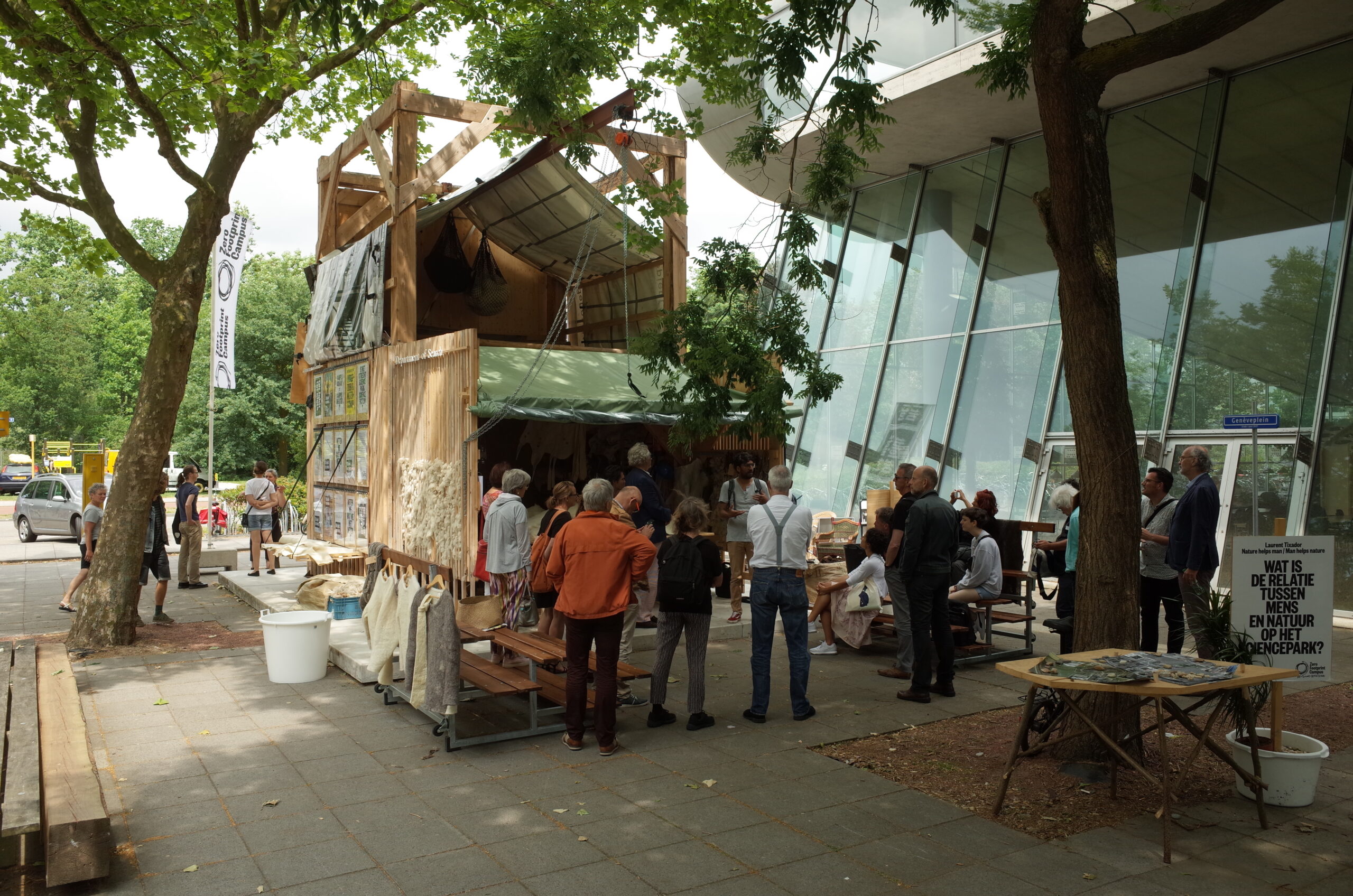
Department of Search
Introduction of a new department in the Utrecht Science Park, the Department of Search. Where the methods artist and science pull together to investigate complex issues.
Podcast (English)
Podcast (Dutch)
The Department of Search was established in 2014 at Science Park Utrecht by Cynthia Hathaway, Carlijn Diesfeldt, and Melle Smets. For three years this artist-run organisation experimented with action search interventions in the Science Park to explore new forms of encounters between artists and scientists. The key question was how to conduct search together and make peripheral knowledge part of the scientific discourse of knowledge production.
Non Expert Experts (2014)
The same small circle of experts circulate on the world’s conference stages… but what with all the specialist knowledge right under our noses? Who are the unacknowledged experts in our midst? The maker movement has done a good job of uncovering hidden technological talents, but what other domains are developing innovative techniques with possible wider impacts?
In collaboration with V2 Institute for Unstable Media, System D Academy Sandberg Institute, and the Open Design students at the Willem de Kooning Academy, Hathaway, Diesfeldt and Smets went on a hunt for the most interesting ‘non-expert experts’ in the Netherlands. We found three hobbyists working on growth in life sciences. The hobbyists were Eugene Homan, a fitness champion, Sandra Deegenaars, a dog breeder of American Bullies, and Brad Wursten, a world record giant vegetable grower.
[masterslider id=”56″]
System D Stress Test (2015)
The Uithof was designed in the 1960s following the U.S. modernist vision of the university campus outside the city centre. In 2014, the monofunctional campus started its transformation into a Science Park, combining the university with student housing, a commercial business quarter, restaurants and shops. A high tech city for the brightest minds. The public space had to become a high-end meeting point instead of the monofunctional transit space between university buildings.
The Utrecht Art in Public Space department assigned Cynthia Hathaway, Carlijn Diesfeldt, and Melle Smets, to research the potential for a public art program. For the first action search program the search team of twelve students from the System D Academy (Sandberg Institute) occupied the 13th floor of the vacant Van Unnik building. The students’ task was to formulate a search topic where the science community could team up with artists.
The public space was put to the test whilst students stayed on campus 24/7 and inside the office buildings. Meanwhile the 13th floor of the Van Unnik building changed into the Department of Search with an intense lecture program of scientists, hobbyists, artists, and journalists about the common ground of thinkering. The offices became studios where students envisioned their ideas of what could be typical search topics.
[masterslider id=”57″]
2015 Giant Corn Field
The second action search was the Giant Corn Field, a communal giant vegetable field at the Utrecht Science Park. The campus has a lot of meadows that function as fire walls between the science departments. These are permanently enclosed by fences and gates, maintained by 325 sheep from the university research farm. The other half of the landscape is for the 70,000 academics who hardly have any space to conduct experiments and hold meetings. How can the grasslands become part of the productive thinkering space, and still function as a fire wall?
The Department of Search squatted the most central meadow and built a pedestrian bridge so everyone could get in. The Giant Corn Field was set up as a competition field to grow the highest corn field in the world. 200 Jala corn plants were distributed to a wide range of people on campus who were willing to compete. The highest corn plant was sent to the National Giant Vegetable Competition 2015. Unfortunately, the scientists lost the battle from the hobbyists. But the connection was made and since then every year the Giant Vegetable competition is organised in the botanical gardens of the Utrecht Science Park.
[masterslider id=”58″]
Zero Foot Print Campus (2017)
To make the Utrecht Science Park a centre of ‘bright minds and better futures’ the campus needs meeting places where people can share ideas. Art can play a key role in creating an inspiring encounter and in connecting disciplines in an unexpected way. After two action research projects at the Utrecht Science Park, the Department of Search got the support of the university to scale up an artistic search program.
For an entire year, twelve artists worked on a search proposal with the working title Zero Footprint Campus, which shed a new light on the campus of the future. The artists got their inspiration from whatever the campus had to offer, from the landscape and the animals that wander around, to the knowledge that scientists produce on site.
In June 2017 the Zero Foot Print Campus manifestation took place at the heart of the campus. The nameless square for one month transformed into an outdoor university displaying a collection of prototypes made by the artists in collaboration with scientists. The public could discover their search results in a public program of lectures, guided tours and workshops.
[masterslider id=”60″]
Publication Department of Search
The Department of Search’s action search ended in 2017. For three years, this artist-run organisation experimented with action search interventions, to explore new forms of encounters between artists and scientists. This book unfolds the findings and speculates on the potential of a shared space to formulate fundamental questions of the future.
The Department’s basic procedure is simple: artists thoroughly search University premises and the spaces inside, around and between the buildings, for clues, cues and ideas they can use. They share their findings, models, and project ideas with local scientists. A search is conducted for shared values and what they may lead up to. Often, from this intensive adventure a wide panorama of potential, a collection of debatable futures, emerges. Unfortunately the University management did not see the value of a shared search program for the future.
[masterslider id=”59″]
Department of Search
Location Utrecht Science Park de Uithof
Period 2014 – 2017
Non Expert ExpertsTeam Michelle Kasprzak, Elise van Beurden, Djip Minderman, Niels Buwalda and Tom van der HeidenCommisioned by V2_lab for unstable mediaPartners V2 Institute for Unstable Media, Willem de Kooning Academy, System D academy Sandberg Institute
System D Stress Test (2015)
Team Michelle Kasprzak, Cynthia Hathaway, Melle Smets, Nora Morton, Hans Abbink, Simon Angel, Jessica GyselGuests Pek van Andel, George Hathaway, Dirk van den Heuvel, Arjo Klamer, Prof Corné PieterseStudents Janneke Absil, Dennis Munoz Espadina, Annette Kouwenhoven, Boo van der Vlist, Clement Caret, Theofanis Dalezios, Maarten Davidse, Karoline Buurman, Martina Raponi, Ming Sho Tang, Lisa Deijl, Gitte NygaardCommisioned by Utrecht Science Park foundationPartners V2 Institute for Unstable Media, System D academy Sandberg Institute
Giant Corn FieldArtisitic team Melle Smets, Cynthia Hathaway, Kris de Decker, Gardening: Brad Wursten, Mark Thur Interns Theofanis Dalezios, Dennis Munoz Espadina Graphic design: Jorgen Koolwijk
Commisioned by Utrecht Science Park foundationFunded by Utrecht municipality, Stichting DOENPartners Dutch Giant Vegetable Growers Association, Botanical Gardens Utrecht, Utrecht Science Park foundation, Tolakker farm, The Farm Animal Health Clinic, Sodexo, Brouwvereniging Rotterdam, Future Food 2015
Special thanks Hans Lutz, Jorn Vernooij, Gerard van Buiten, Ivo van Capel, Fred van Mosel, Timo Bierhoff, Corné Pieterse, Vincent Kranenburg, Wesley Bosma
Zero Footprint CampusTeam Zero Footprint Campus Artistic: Carlijn Diesfeldt, Melle Smets, Cynthia Hathaway Production: Antwan Cornelissen Project coordination: Monique Dirven, Nicoline Meijer, Gary Sheikkariem Coordination participants & volunteers: Hanneke Hulshof Communication: Eveline Mulckhuyse Campaign concept & design: DietweeFunded by The Art Of Impact (Mondriaan Foundation), Utrecht Province, kfHein Foundation, Prince Bernhard Culture Foundation & DOEN Foundation.Partners Gemeente Utrecht, Stichting Utrecht Science Park, Universiteit Utrecht en Stichting Aardschap
Publication Department of Search
Editor: Ed van HinteText: Carlijn Diesfeldt, Melle Smets, Cynthia Hathaway, Ed van Hinte (Getting Acquainted, Shared Values)Photography: Aafke Holwerda, Jan Scheffe, Melle Smets, Cynthia Hathaway, Renate Boere, Carlijn Diesfeldt, Jokko VoogtDrawings: Melle SmetsConcept Design: Studio Renate Boere, Den HaagPrinting & binding: Printing house KopaISBN 9789082672541Commissioned by by the Aardschap Foundation, Utrecht February 2018This publication was made possible by the DOEN Foundation and the Municipality of Utrecht.
…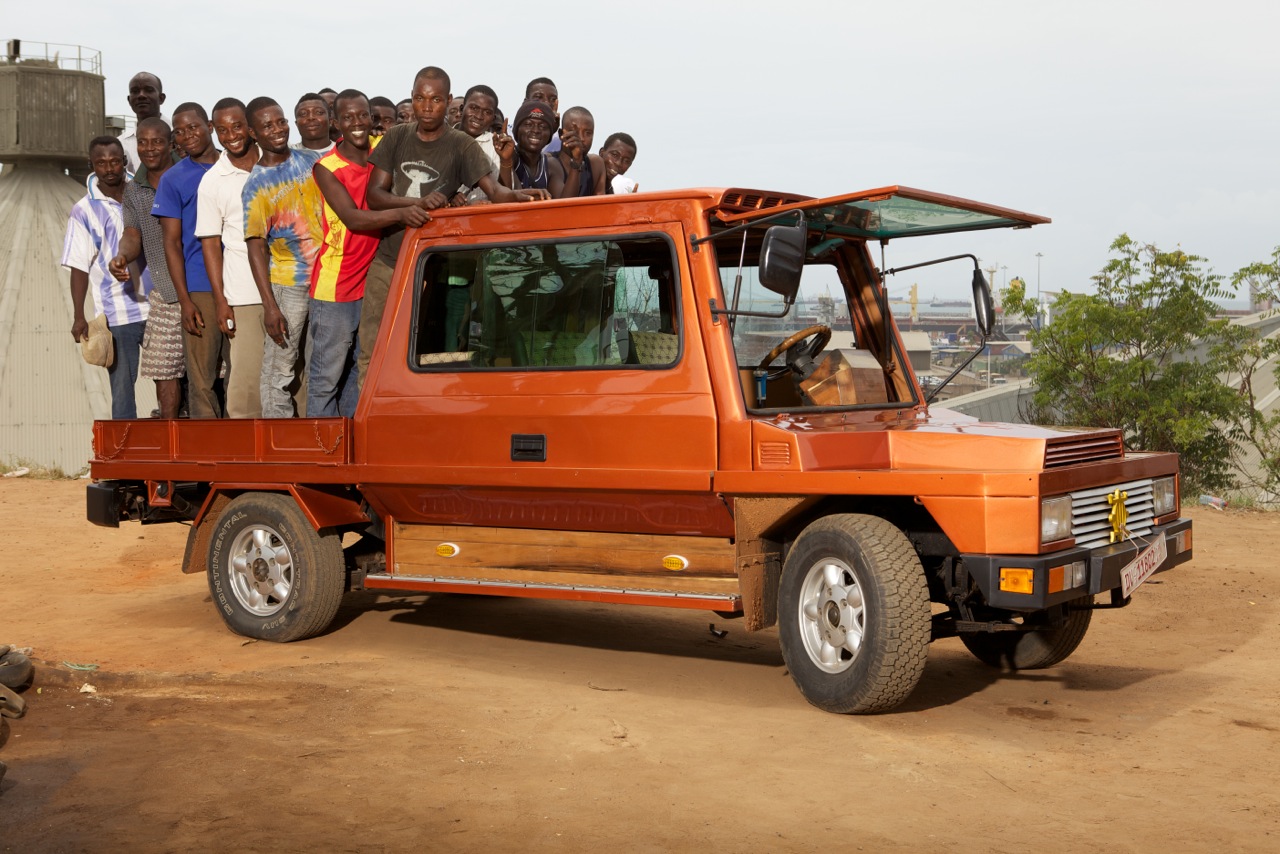
Turtle 1
Building a car in Africa.
Podcast (Dutch)
Podcast (English)
Not all cars end up in a junkyard, some get reincarnated in Africa. Smets and Onna followed a trail of old cars and ended up at Suame Magazine (Ghana), the largest industrial car repair hub in sub-Saharan Africa where more than 200,000 people work and live simplifying modern cars and making them suitable for the African market. Could this informal recycling community design its own car brand and start an open air car factory?
Impression Suame Magazine
[masterslider id=”7″]
Turtle 1
In collaboration with the Suame Magazine Industrial Development Organisation (S.M.I.D.O.), artisans built the concept car Turtle 1 in just 12 weeks. The Turtle 1 is assembled from various car brands and without a board computer, so it can be repaired with any available car part. This makes it impossible for the car to reach high speeds, but the low tech design makes it a robust vehicle, fit to the ‘Slow but Steady’-slogan.
The project attracted a lot of attention from the Ghanaian media and the Turtle 1 was blessed and inaugurated by King Otumfuo Nana Osei Tutu during his first visit ever to Suame Magazine. The king ordered a promotional tour in Europe to showcase the emerging car industry of Ghana. The Turtle 1 was presented in several TV shows in Germany, France and the Netherlands, featured in many newspapers and magazines and was then exhibited at several events, car fairs and exhibitions. The Turtle 1 showcased the strengths, vitality and possibilities of Suame Magazine as a place for car manufacturing, as well as the potentials of an African car. It also inspired many people in and outside of Ghana to work towards a new Ghanaian car brand.
[masterslider id=”9″]
2015 Master apprentice assembly line
In 2015 the Turtle came back to Suame Magazine where Ghanaian stakeholders wanted to investigate the possibilities to continue the Turtle project and explore the possible future of a local car industry in Suame Magazine. Based on the experiences and ideas in the building process, Aardschap together with local partners in Ghana and the Netherlands conducted a feasibility study to explore such a possibility.
[masterslider id=”8″]
2016 Turtle 1: Building a car in Africa
Five years after Smets and Van Onna set foot on Ghanaian soil, it is time to reflect on what has been achieved. The book Turtle 1: Building a Car in Africa (2016) takes the reader on a fascinating journey through the authors’ experiences as naive outsiders – with no knowledge of cars – who wanted to find out how an informal economy works.
Designed by Ko Sliggers – known for his award-winning cookbook about Sicilian cuisine Koken Tussen Vulkanen, the book is filled with humorous and insightful images and videos. Warna Oosterbaan, author of various publications such as Motorziel: Kleine Sociologie Van Een Machine (2010) leaves no question unanswered in his thoughtful interview.
To fully understand the functioning of the Suame Magazine, a hand drawn map by Melle Smets is enclosed at the back of the book. Unique for a book is the inclusion of videos that can be called up on numerous pages by scanning the QR codes.
[masterslider id=”108″]
Title: Turtle 1 – Building a car in AfricaAuthors: Melle Smets & Joost van OnnaPhotography: Teun VonkText: Melle Smets, Joost van Onna, Warna OosterbaanDesign: Ko SliggersLanguage: EnglishPublisher: Paradox, Verlag KettlerMeasurements: 17 x 23.5 cmPages: 288ISBN: 978-90-818876-6-3Copies: 1700Price: €29,50
In other media
Period 2012-2015
Location Suame Magazine, Kumasi, Ghana
Team Joost van Onna, Melle Smets, Teun Vonk
Commisioned by Aardschap Foundation
Funding Stimuleringsfonds Creatieve Industrie, Centrum Beeldende Kunsten Rotterdam, Stichting Doen
Sponsor Royal Burger group, AEL, Xelvin BV
Special thanks Peter Michiel Schaap, Joris Lindhout, Maaike Gouwenberg, Jan de Bruin, Immanuel Sirron Kakpur
Partners
Suame Magazine Industrial Development Organisation (SMIDO), Kwame Nkrumah University of Science and Technology Kumasi, Embassy of the Kingdom of the Netherlands, United Pension Trustee Ghana, Gerrit Rietveld Academy Amsterdam, department Designlab – Cynthia Hathaway, Willem de Kooning Academy Rotterdam,department Fine Art – Rolf Engelen, Xelvin BV, HAN Automotive, V2_
In collaboration with
Technical team S.M.I.D.OProject management: George Amankwah (President) Charles Taylor (Vice President) Nyaabe – Aweeba Azongo (Consultant) Reuben Konlan, Eva van Ginhoven, (Communication) Pascal de Man (Website), Iztok Klančar, Mat Wijn (Video edit)Technical supervision: W.A. Cophie Albert, Philip K. KwartengAssistent technical supervision: Antipem Charles Ofori Mechanics: Christopher Adusei, Kofi Owusu, Eliaia Abew, Appiah Boateng, Daniel Appiah Adjeilum, Seth Frimpong, J.K. Mensah, Desmond, Apomasn Kofi Stevenson, SidikAdramani Painters: Appiah Kubi, Debora Nyarko, Thomas Owusu Liners: Atta Agyemari, Degraft Kwame, Atta, Joseph Arthur, Yaya Adama, Yaw Electra: Lamus Kofi Musah, Shiabu Nabiridih Rashidi, James, Justice Jamal Saeea, Francisco YeboahBodyworkers: Abdul Razak Abubakar , Daniel Owusu , Sololmon Osei Yeboah All Round: Francis Kuyol, Samuel Ampiah, DanielCarpenter: Murphy Martey Cudjoe
…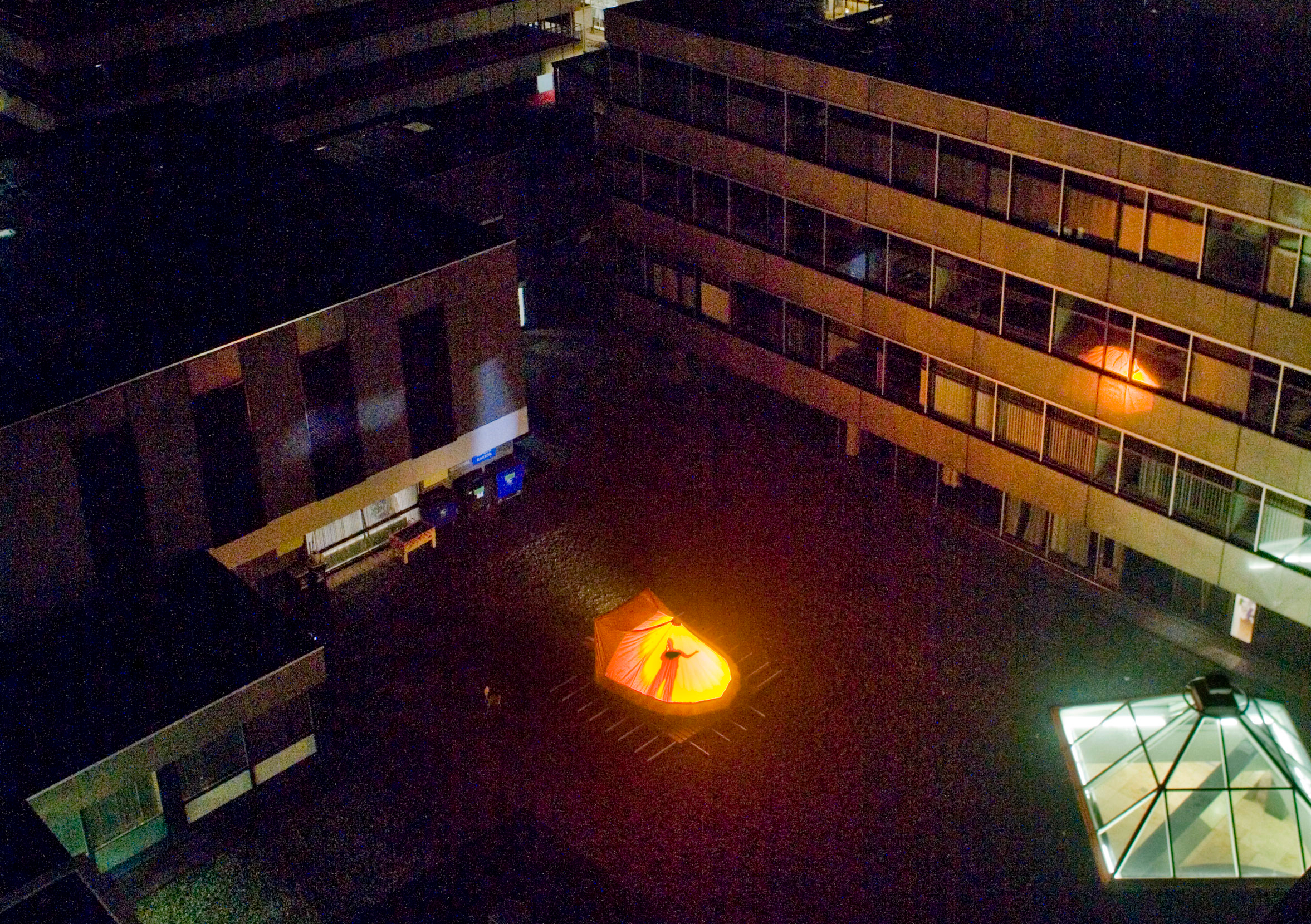
Radio Homo Ludens
A radio shack for the Homo Ludens in the most hated, but also successful shopping centre Hoog Catharijne.
Podcast (Dutch)
Hoog Catharijne is the most hated, but also most successful shopping mall, in the city centre of Utrecht. Designed as a beacon of modernity in the 1960s it would replace the old city; Away with those old canal houses and brick roads, making way for elevated pedestrian promenades, shopping landscapes and skyscrapers. 40 years later, in 2012, the shopping mall was about to be renovated. Time to evaluate the promise of a better future with the Art in Public Space manifestation ‘Call of the Mall’ in 2013.
[masterslider id=”50″]
2012 Alone on an Island
From 11 to 18 November 2012 there was a lonely tent on the roof of Hoog Catharijne shopping mall. Melle Smets stayed there for a week without leaving the building. With a microphone and a credit card in his pocket he wandered to find the soul of Hoog Catharijne.
Smets associated the futuristic city plan with the new world of the Homo Ludens (the playing man). In the 1950s artist Constant Anton Nieuwenhuys envisioned a gigantic structure built over the old city, where man could shake off history and bloom into a true self. His models and paintings look similar to the concrete jungle of Hoog Catharijne today. Under the slogan ‘Help the Homo Ludens’, Smets tried to live according to the serious game plan drafted by Johan Huizinga (the inventor of the term playful man) in the hope of meeting other Homo Ludens.
[masterslider id=”51″]
Time capsuleThe tent in which Smets stayed was the same tent in which writers Godfried Bomans and Jan Wolkers camped on Rottumerplaat (a West Friesian island) for the radio program ‘Alone on a island’ in 1971, an earlier, maybe a first public homo ludens-experiment in the Netherlands. By installing this tent on the roof of the most crowded shopping mall in the Netherlands, Smets raised the question whether what the tent represented in the 1970s, can be meaningful to the ambitions of tomorrow. Many newspapers, TV stations, as well as the national radio station climbed the roof to see this time capsule and listen to the stories of Hoog Catharijne coming to the surface.
2013 Radio Homo Ludens
The redevelopment plans for Hoog Catherijne 2013 paid little attention to the remarkable village culture that Smets discovered during his stay in a tent on the roof. The Homo Ludens is still there, but lives a secluded existence above and below the storefronts. They call themselves “Mall rats”; cleaners, office clerks, homeless people, junkies, and residents who cherish the concrete labyrinth.
[masterslider id=”52″]
Radio Homo Ludens gave these villagers a voice in the shopping centre. A large wooden box served as a recording studio. ‘Radio Homo Ludens’ soon became a hangout with news about daily life in Hoog Catharijne, but also in-depth interviews, stories from past times, and a refuge for the homeless or people who are not there to buy things. For three months, the studio broadcasted stories which you could hear once sitting down on the benches.
After two years and many hours of audio recordings Smets, together with radio maker Marten Minkema and sound artist Mat Wijn, made the radio documentary “The Mass Massage Machine”. The program was broadcasted on the national radio channel 1.
Radio Fragments
Location Hoog Catharijne Utrecht
Period 2012 – 2013
Team Mat Wijn, Marten Minkema, Melle Smets
Commisioned by Stichting Kunst in het stationsgebied, Municipality of Utrecht, CorioIn collaboration with Interns: Laila Boufer, Lieke van der Made, Linde Neyts, Maaike de Jager, Rob Keulemans, Isis, Eva GeutjesSpecial Thanks Rob Huibers, Laura Jansen, Annemarie Geersink, Ingmar Heytze, Menno Overtoom, Ronald Besemer, John Makkink, Jacq Cornellissen, Errol Lentjes, Tito, Rob Dettingmeijer, Tim Verlaan, Cecile Reijnders en Jasper Willigers, Daan Quakernaat, Van der Linden family, Paul Vergeer, Rijk family, Ineke Bakker, Jan Hagenouw, Jacqueline van Dop, Hans Blekkink, Mark, Erny Green, Anco Schut, Bomans family, Wolkers family, Dennis Le Poole, Micha Princen, Linde Dorenbosch, Lieke Timmermans, Nienke Martinus, Carlijn Diesfeldt, Monique Dirven
…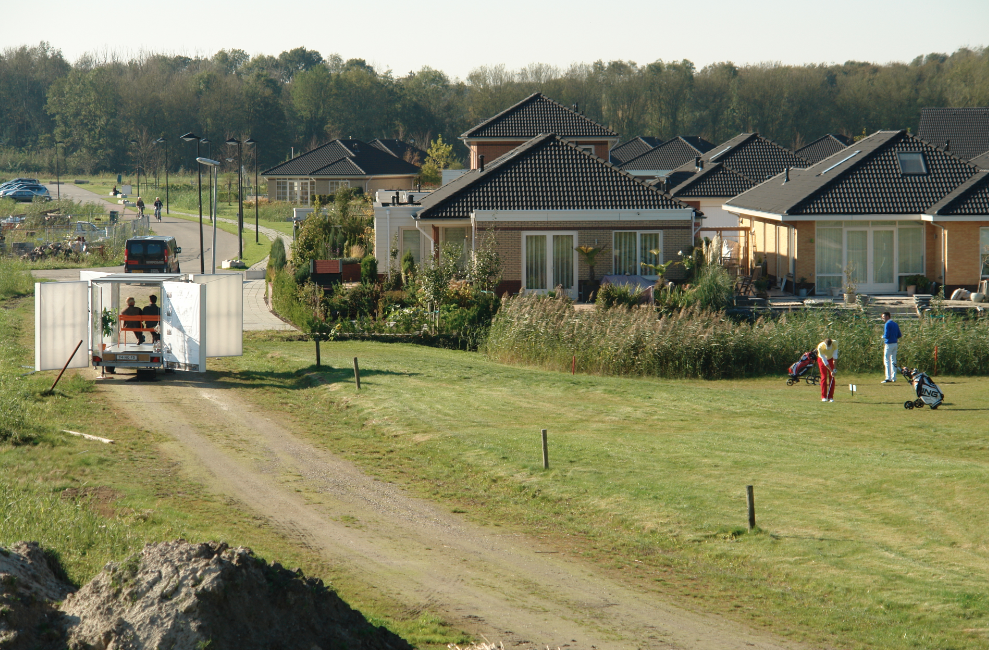
New Towns
An exploratory mission to three New Towns, three countries, with three different founding ideas.
Podcast (Dutch)
The planned city is a monument to the zeitgeist in which it was conceived. The attempt to force a better future by building it, is infectiously optimistic. View of Lelystad (2012) and later Sister Cities (2014) are a suggestion to put yourself in the shoes of city makers of the past, and of those who further shape their legacy today. Can an idea be the foundation of a city and stand the test of time?
[masterslider id=”46″]
2012 Review on Lelystad
View of Lelystad investigated how the pioneering spirit of the planned city has embedded itself in the DNA of the new generation citymakers. Melle conducted interviews with eight people at eight different locations in Lelystad from a glass observation carriage called the Schouwwagen. Schouwwagen is roughly translated as a ‘mobile landscape inspection post’. The quadrangle view of the Schouwwagen instructed the interviewer to ‘look hard’. The alderman, the fishmonger, the landscape gardener, the organic farmer, the archaeologist, the urban planner and the theatre director talked about their Lelystad. Melle translated each ‘schouw’ into four drawings that were displayed on the shutters of the Schouwwagen. The exhibition toured to many villages and towns in Flevoland.
A recurring question in the interviews was the balance between hope and hubris. The belief, or at least the hope, that the living environment shapes us, awakens the Frankenstein in all of us. How do the current city makers in Lelystad deal with this?
[masterslider id=”5″]
2014 Sister Cities
An exploratory mission to three New Towns in three countries with three different founding ideas.
Sister Cities is the sequel to View of Lelystad in 2012. The city makers who were interviewed still showed the firm conviction that you can plan a city and know what it will look like, even after seeing how Lelystad turned out completely different from how it was originally designed. Is it universal hope and hubris, or is it a typical Dutch thing? In order to find out, other planned cities abroad could provide an answer.
The agricultural city of Lelystad (NL), the chemical city Marl (D) and the university city of Louvain-la-Neuve (B) are built by carefully planning to become the best version of their kind. Caught up by economic, demographic and cultural developments, they all became something their founding fathers could not have foreseen, nor hoped for.
A team of architects, artists and scientists undertook three exploratory missions in 2014 in search of the inheritance of the foundation stories in the three drawing board cities. Visiting them was an attempt to establish a new sister city bond as there is a lot to learn from each other. However, none of the municipalities were interested in meeting the other family members.
Lelystad
[masterslider id=”47″]
Louvain La Neuve
[masterslider id=”49″]
Marl
[masterslider id=”48″]
Location Lelystad, Louvain la Neuve, Marl
Period 2011-2014
Commisioned by Stichting de BarakFunding ReView on Lelystad Gemeente LelystadTeam ReView on Lelystad Melle SmetsTeam Sister Cities Christiaan Fruneaux & Edwin Gardner (Monnik), Theo Deutinger & Stefanos Filippas (TD Architects), Tim Verlaan & Mark Minkjan & René Boer (Failed Architecture), Yumemi Kobayashi & Gayane Yerkanyan (HKU), Elias TielemanCollaborations ReView on Lelystad Elias Tieleman (Curator), Jan Gras, Job Fackeldey, Ruud Luchtenveld, Andre Holk, Jan Jonkman, Wouter Uijthoven, Nike Ruijter, Jan Kalff
…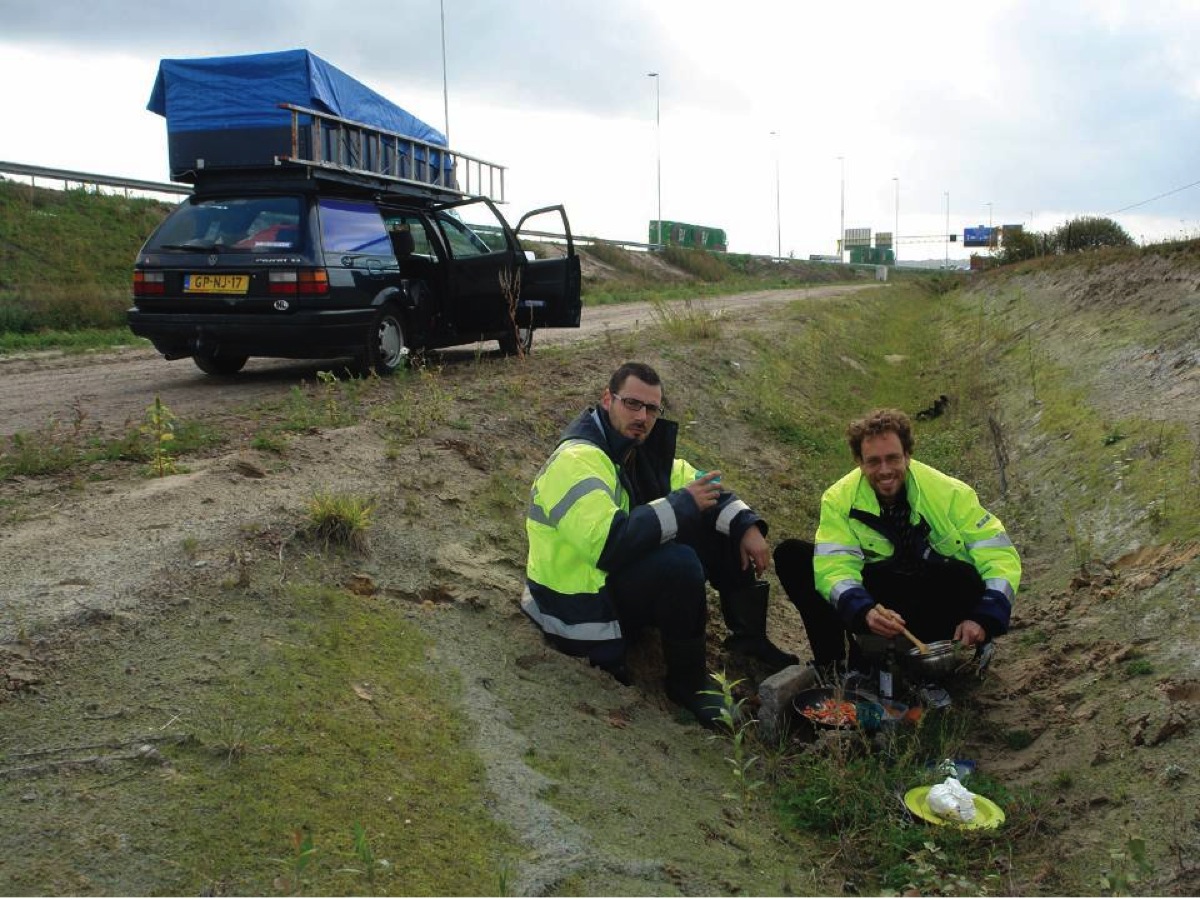
Highway Stories
A travel guide, cultural criticism and picaresque novel in one, examining the significance of the highway with regards to the Netherlands.
Podcast (Dutch)
On October 16, 2009 artist Melle Smets and philosopher Bram Esser went on a Highway Safari. A journey to re-explore the no man’s land of the Dutch highway. Four uninterrupted weeks in the world of gas stations, roadside restaurants, brain parks and sex parkings. Smets and Esser operated from a specially equipped car with two sleeping quarters, a roof terrace with a six-metre lookout, and a library.
For a month, they crisscrossed the highway to map the blindspots. The highway turned out to have a rural character of its own. Industrial, guileless, tough and above all local. The travel log became a rich source for the expansion of the Highway Museum archive and resulted in the book Highway Stories.
Highway Safari
[masterslider id=”41″]
Highway Cabinet
The Highway Safari came back from the journey with a lot of treasures. To showcase all these highway exotics they set up a 19th century style Highway Cabinet. Artist Kroko Schilte made a series of drawings showcasing the order of things and drew archetypes of buildings, landscapes, cars, and roadkills. Next to the drawings of Schilte the Highwaymuseum collection was on display with architectural models, found objects which are too big for the mobile museum, photo albums of Highway personnel, and maps made by the Highway Safari team.
[masterslider id=”75″]
Highway Stories (Snelwegverhalen)
The Highway Safari resulted in the publication Highway Stories: a travel guide, cultural criticism and picaresque novel in one, examining the significance of the highway with regard to the Netherlands. It includes expedition-recorded portraits of highway residents, advice on how to survive on the highway, and a collection of typical local highway products, such as cheese on a stick, plastic wrapped apple slices and the so-called coffee-meatball.
[masterslider id=”77″]
Publisher: 010
Pages: 496
ISBN: 978-90-6450-755-7
Copies: 1500
The Mobilist
As a preview of the book Highway Stories, the BKKC (Brabants Kenniscentrum voor Kunst en Cultuur) organised the exhibition ‘The Mobilist’. The exhibition displayed the findings of the Highway safari on the Brabant highways with personal stories, photographs and illustrations. Brabant is the heartland of car culture in the Netherlands. Already before the highway was built, the Catholic church made sure every village got its own industrial area. The idea was to withhold people from migrating to the big city. However, the Brabant people started buying cars and since the highway network was laid out as a chessboard, comparable to L.A. (USA) and the Ruhr area (Germany), car culture quickly became most apparent in Brabant. As part of the exhibition the first highway newspaper in the Netherlands was published called ‘The Mobilist’. The first edition was received by the Chief Government Architect for Infrastructure Ton Venhoeven.
[masterslider id=”76″]
Location: Dutch highway network (Highway Safari), Het Wilde Weten – Rotterdam (Cabinet), BKKC – Tilburg (Mobilist)
Period: 2009 – 2011
Team Highway Safari, Highway Stories & The Mobilist Melle Smets, Bram Esser
Highway SafariFunding: Fonds voor Beeldende Kunsten, Stimuleringsfonds voor de ArchitectuurHighway StoriesFunding: Mondriaan fondsIn collaboration with: Johannes van der Sluis (Text editor) Wilma Kempinga, Melle Smets, Eva van Ginhoven (Funding) Pier Taylor (Graphic design) Lecturis (Print) Uitgeverij 010 (Publisher) Rotterdam ISBN 978 90 6450 755 7Partners: 010 uitgeversSpecial thanks: Jacques Jamin, Jan Willem de Jager, Frits den Hollander, Janus de Vries, Mieke Dings, Michelle Provoost, Frans Pot, Eva van Ginhoven, Kroko Schilte, Teun Vonk, Martijn Boven, Peter Michiel Schaap, Tijs van den Boomen, Peter Smets, Jan Brouwer, Dirk Baalman
Highway CabinetTeam: Melle Smets, Kroko Schilte (collectiestukken)Special thanks: Renee Boomkens, Eva van Ginhoven, Mike Naafs and Steffi
The MobilistCommisioned by: BKKCIn collaboration with: Tijs van den Boomen, Krijn Christiaansen and Linde Egberts (articles), Floor Tinga (editor), Pier Taylor (Graphic design Exhibition & Newspaper)
…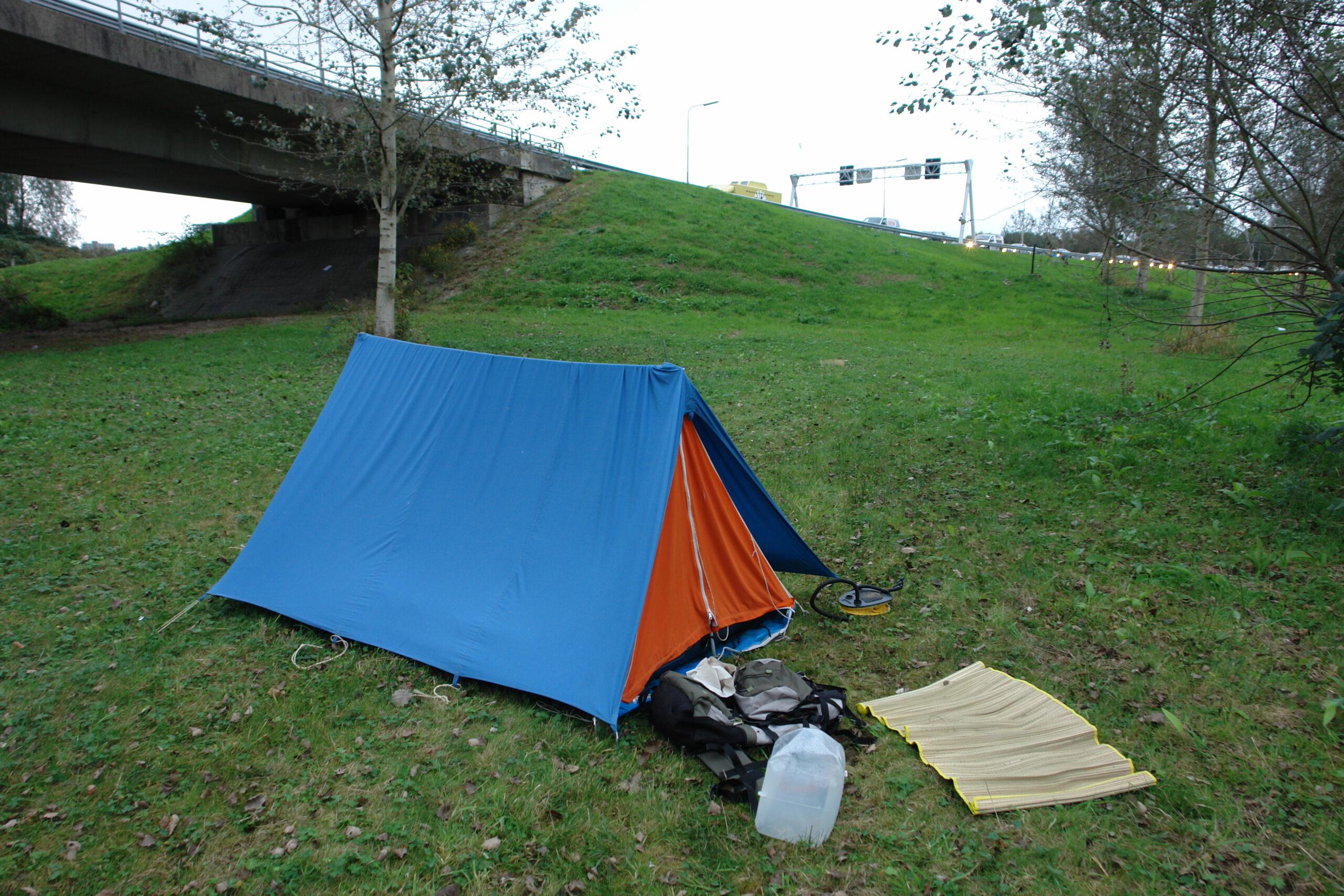
Highway Studio
Testing the highway as a new public domain.
Podcast (Dutch)
In the 1960s, the highway was a paragon of progress. But in 2011, the highway was perceived as a poor place to be: air pollution, tumult, traffic jams and noise made it an unhealthy, unsafe and ugly environment. Nobody wants to live close to it, but a lot of people do. The A20 is one of those old highways that used to be on the edge of the city, and is one of the bottlenecks of congestion today.
From 2008 to 2011, Rijkswaterstaat’s innovation programme, Roads to the Future (WnT), organised Operation Atlantis, an expedition to the sustainable highway. In the project participants from very diverse organisations tried to give shape to an integral area development vision, in which the highway was seen as a ‘place to be’, starting from a good balance between ‘People, Planet, Profit’. The A20 was one of the case studies.
[masterslider id=”39″]
Highway Studio
The Highway studio, in collaboration with the Willem de Kooning Art Academy and the Road Management Authorities, curated a program with lectures, excursions, expert meetings and workshops around the A20 between the Terbrechtse- and Kleinpolderplein junctions. The Highway studio tested the highway as a new public domain during a semester-filling program. Twenty Fine Arts students built an expedition camp in the Terbregseplein junction to create works of art that were presented at regular intervals to civil servants, designers, and policy makers.
[masterslider id=”40″]
Location A20 A16 junction Terbrechtseplein – Rotterdam
Period 2010
Team Melle Smets, Reinaart van Hoe & Rolf Engelen en Noor Bongers
Commisioned by Rijkswaterstaat Corporate innovation program ‘Wegen naar de toekomst’Funding Rijkswaterstaat – Operatie AtlantisPartners Rijkswaterstaat, Willem de Koning academieSpecial Thanks Ingrid Roos, Annemieke Tromp, Wil Rene Jansen, Maik MagerIn collaboration with
Participating students Willem de Kooning Academy Rotterdam: Claire van Lubeek, Roos Wijma, Linde Akkerman, Remty Elenga, Adela Tenorio De Peroy, Joey Verberkt, Micha Prinsen, Tawhida Engelenburg, Lori van Vlerken, Niccolo Mascheroni, Gianluca Craca, Rosa Peters, Roel Roscam Abbing, Chris Bijdevaate, Boo van der Vlist, Peter Fortmann, Wendy van der Hart. Verslag/logboek: Juan Beladrich
Docenten ateliers(camping): Dirk van Lieshout, Doris Denekamp, Lukas Simonis, Rolf Engelen, Melle Smets
Jury: Wim Anemaat, Rijkswaterstaat, Dienst InfrastructuurTertius Hanekamp, Atelier RijksbouwmeestersWil Rene Jansen, Rijkswaterstaat, ‘Wegen naar de Toekomst’René Verouden, Willem de Kooning Academie Rotterdam, Autonome kunstKarel Winterink, Kunstgebouw, Publieke Werken
Main production: Roeland Otten
Production camping & Facebook: De Kapsalon
Part production & coach: Eva van Ginhoven
Host: Carlo van Driel (Station Noord)
Website snelwegatelier (snelwegatelier.tumblr.com)
Website Tumblr & wordpress: Wai Seu Chan
Website text & redaction: Eva van Ginhoven
Lectures: Jeanne van Heeswijk, Karel Wetering (Kunstgebouw), Dirk van Lieshout, Kamiel Verschuren, Guido Enthoven (Instituut Maatschappelijke Innovatie), Justin Bennett, Marnix de Nijs, Wilfried hou je bek, Arjo Klamer, Maarten van Wesemael, Joris Vijverberg (Rijkswaterstaat), Wim Nijenhuis, Lino Hellings, Sara Daleiden (L.A. Rangers), Sonja van Steekelenburg (Rijkswaterstaat), Alex van Loon (Rijkswaterstaat)”
…
Highway Museum
Regional museum of the highway culture.
Podcast (Dutch)
The highway is a region by itself. It has its own typical billboard architecture, hands-free fast food to eat behind the wheel, daily parades in traffic jams, specific crafts like roadkill cleaning and truck driving. It even has its own police force. If you look at the map of the Dutch highways, you immediately see the contours of the country. The highway network is so intricate that you can effortlessly draw the map of the Netherlands in it. Since the construction of the first highway in 1936 between Voorburg and Zoetermeer, the Dutch highway network has grown into a network that is 2,346 km long. Hundreds of thousands of people and countless goods are in transit on this network every day. The highway has become the number one monumental structure of the last century.
[masterslider id=”42″]
The Highway Museum
The Highway Museum was a mobile unit carrying the cultural heritage of the Dutch highway. The outside panels showcased the regional history categorised in landscape, food, building style, crafts & customs, and traditional costume. Inside the museum there was room for historical artefacts and found objects. A podcast tour by Marten Minkema and Mat Wijn portrays highway life of people who spent their days in the driver’s seat.
The collection of the Highway Museum was built from scratch but grew fast because of the intensive fieldwork of the Highwaysafari, a 30-day expedition on the Dutch highways in 2009. The many encounters on the road tapped into a rich source of stories of people who spent their entire lives on and around the highway. The stories could be connected to archives of oil companies and governments to construct a new database with the highway as central subject.
The items below are part of the museum collection.
[masterslider id=”43″]
Highway Museum Audio Tour (Dutch)
On Tour
The Highway Museum was a promotion tour to advocate for a National Highway Museum in addition to the existing Maritime- and Railway Museums. From 2007 until 2010 it moved through the Dutch holiday fair, mobility events, many parking lots or shopping malls and highway resting areas. In 2008 the National Council for Architecture and Landscape (Rijksbouwmeester) invited the Highway Museum to join the National campaign ”Route ontwerp” to make the highway a design task for the Directorate-General for Public Works and Water Management (Rijkswaterstaat). As a follow-up of this mission the think tank Operatie Atlantis ‘Wegen naar de Toekomst’ was established. The Highway museum contributed with exhibitions, workshops, guided tours, and a highway design studio based in the middle of highway junction Terbrechtseplein.
[masterslider id=”44″]
Location The Dutch Highways
Period 2008 – 2011TeamMuseum collection: Rob Groot Zevert, Hans Jungerius, Ron Stemers fotografie, Suzanne Valkenburg, Victor MeeuwssenAudio tour: Marten Minkema, Mat WijnGraphical design: Pier Taylor
Commisioned by VNU Exhibitions Europe, Stichting Via, Provincie Brabant, Wegen naar de toekomst (RWS), Hoge School Rotterdam, Fonds BKVB, N.A.I., Route ontwerp (Ministerie VROM), I.M.I., A1 project, CROW XL.Funding Fonds BKVB, VSB Fonds, Mondriaan fonds, Rijksbouwmeester Infrastructuur, RijkswaterstaatSponsor VNU Exhibitions Europe, Bakerstreet Benelux, Dura Vermeer, EDCO, Fast Food Express, Greencore, Rode Pelikaan, Shell, Unilever, Vakantiebeurs UtrechtSpecial Thanks Svetlana (catering), Vazzek (contact person Minsk), Cees Elzenga (photP.L.H. van Roozendaal (ANWB-wegenwachtmonteur), Ellen Sonderen (Receptioniste v/d Valk Motel West-End), M. Oosting (medewerker Rijkswaterstaat), G.L.J. Aalbers ( Medewerker Total Tankstation), R.H.T. Klein Hemmink ( Motoragent KLPD), Roland Blijdenstijn (Auteur ‘Buiten bedrijf, Benzinestations’), René Walhout (www.autosnelwegen.nl), Frans Zuiderhoek (Bureau Communicatie KLPD), Annaloes van der Lans (Afdeling Communicatie Fina), Bart van Schijndel (Lekkerland Nederland BV), Cora Rutteman (Texaco Nederland B.V.), PD Reklame Velp, Gebr. Slegers, Duiven, Automarkt Utrecht, Mr. Van Zande (Stichting Routiers), Antionet Adriaanse (La Place), Eric Burgers (Auto Grill)
…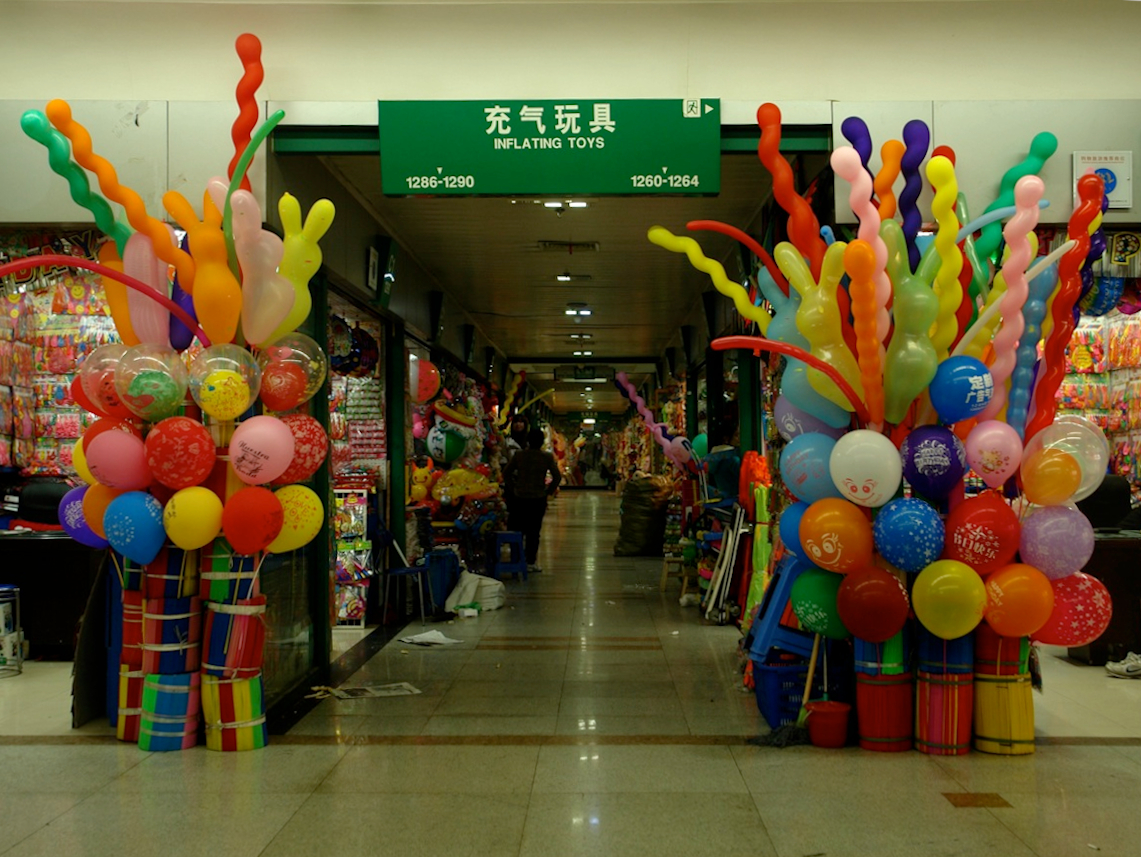
Olympic Trade Mission
A journey upstream the plasic river to the Made in China source.
Podcast (Dutch)
Millions of things we surround ourselves with are labelled ‘Made in China’. These products have saturated the global market and have become part of our everyday environment. What is the source of this plastic river, and how does it flow to all households in the world?
In March 2008, the Olympic Trade Mission Promoting the Chinese Product embarked on a quest to China searching for the source of the so-called plastic river. The Trade Mission’s first stop was the city of Yiwu, 300 kilometres south of Shanghai. This city harbours the world’s largest wholesale trade market of plastic products: Yiwu International Trade City, where one can find every single decorative product desirable to man.
[masterslider id=”38″]
After Yiwu market’s infinite supply of goods, the journey continued towards the origin of the many products. The Trade Mission visited a number of factories where these products are manufactured, in the coastal provinces of Zhejiang, Fujian and Guangdong.
[masterslider id=”72″]
Publication & exhibition
The journey from the manufacturing sources all the way downstream to the harbour was continuously documented, turned into an exhibition at Museum De Paviljoens in Almere. and expounded in the publication “Olympic Trade Mission – A journey upstream the plastic river to the Made in China source” in March 2008.
[masterslider id=”73″]
Video footage of the Trade Mission
Location China – Yiwu International Commodities Fair
Period 2008
Team Melle Smets, Maurits Hertzberger
Commisioned by Museum de PaviljoensFunding Utrecht MunicipalitySpecial Thanks John Ye, Jimmy Hei, Zhokun Yun (a.k.a. Cloud), Jason, Jack and Ady (Yiwu Jiawen Translation Co.), Frans Smets, Mark and Kaman Holtman, Eva van Ginhoven, Quinten Swagerman, Annemiek Veldkamp, Bart Molendijk, Lisette Tuizenga, Ferry de Pater, Jian Ming Gu, Christine Zhao, Michael Wong, Allen Huang, Hester de Kovel, Wubbo Mossing, Roel van Tour, Annie Yi Zheng, Minaz Lakhani, Malak Farouk, Joe Lewis, Ahmad Mamdouh, Mohamed Badawi, Ali Barakath, Muhammad Rahim, Andrey Shekhunov, the Trelo family, Louis van Dijk (Bestsellers B.V.), David the Ribbon King and Jane Zho (Dr. Pal Accessory Ltd.), Kai Xiang (Shanghai Chunhan Plastic Products Co.), Jiang Chaoshun (Chaoda Plastic Toys Factory), Zheng Weiping (Longquan Zhengs Sword Industrial Co.), Mike (Yiwu Hangtian Arts & Crafts Co.), Debby Kruit, Macha Roesink, Annick Kleizen”
Publication
Concept, text and photography Melle Smets and Maurits HertzbergerGraphic Design Paul Swagerman www.paulswagerman.nlTranslation (Dutch-English) Carlijn UrlingsPrinting Veenman Drukkers – Rotterdam, The NetherlandsEdition 500 Published by Museum De Paviljoens Almere, The Netherlands, July 2008 www.depaviljoens.nl (Museum De Paviljoens)
…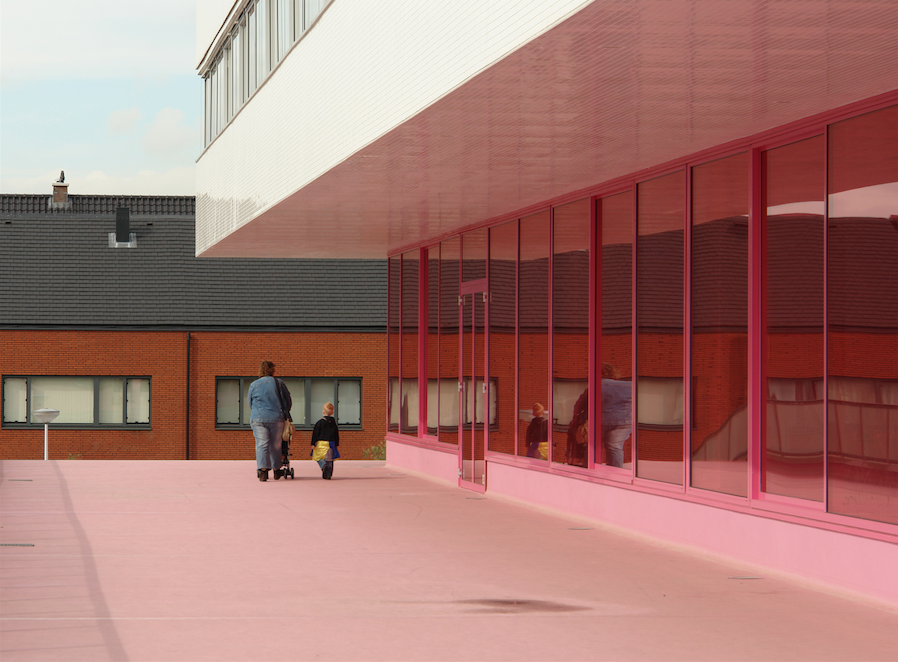
Check Your Place
Give the youth a voice to improve the public space of the New Town Leidsche Rijn.
Podcast (Dutch)
At the end of the 20th century, the Fourth Memorandum on Spatial Planning Extra (VINEX) was launched to prepare the Netherlands for the 21st century. Throughout the country, large VINEX residential areas were built and interlinked by the National highway and public transport network. The Netherlands became a network city. Many young families moved to the Vinex districts. In 2007, the largest VINEX district in the Netherlands Leidsche Rijn was halfway the construction process when the first major social problems arose due to youth nuisance.
[masterslider id=”37″]
2006: Design assignment
Smets was invited by the Beyond Leidsche Rijn project team to design a youth meeting place. To understand why adolescents need designed meeting places, Smets became a resident for two weeks and hung out with the local youth, went along with the police on night surveillance, and interviewed the notary complainants about the youth nuisance. Smets summarised his findings in the publication Control Design, where he analysed the top down urban development as the key problem to the social unrest caused by the youth. Kids had no say in the urban development plans, let’s invite them to design their own hang out.
2007: Workshops
The youth are the first generation to grow up in the network city. The mobility is so high that the district functions as a large hotel where every house is a room to recover from activities elsewhere. Like their parents, the young people travel all over the country for parties, sports and hobbies. To give them a stage to explain how the VINEX actually works, Smets organized the workshop series ‘Sjek Je Plek’ at three secondary schools in Leidsche Rijn: the Amadeus Lyceum, the Leidsche Rijn College and the Via Nova College.
2008: Conference
The ideas were presented in June 2008 to the responsible officials such as the alderman, police, district council, youth workers and city planners. At this conference the kids indicated that hotel Leidsche Rijn should pimp the facilities with a tropical swimming paradise, a nightclub and a cinema. The tropical swimming paradise was granted with a cheque. Every Friday evening the local swimming pool is transformed into a tropical disco. In addition, a youth council was established as a youth advising committee for future neighbourhood development. The committee made public space more accessible for the youth by taking away fences from construction sites and open access to the many canals and lakes.
[masterslider id=”36″]
Location Leidsche Rijn – Utrecht
Period 2006-2008
Team Melle Smets, Kim Boekhout van Solinge, Misjel Kuit
Commisioned by Bureau BeyondFunding Utrecht MunicipalityPartner Cultuur 19Special Thanks Rob Nillezen, Hans Stotijn
…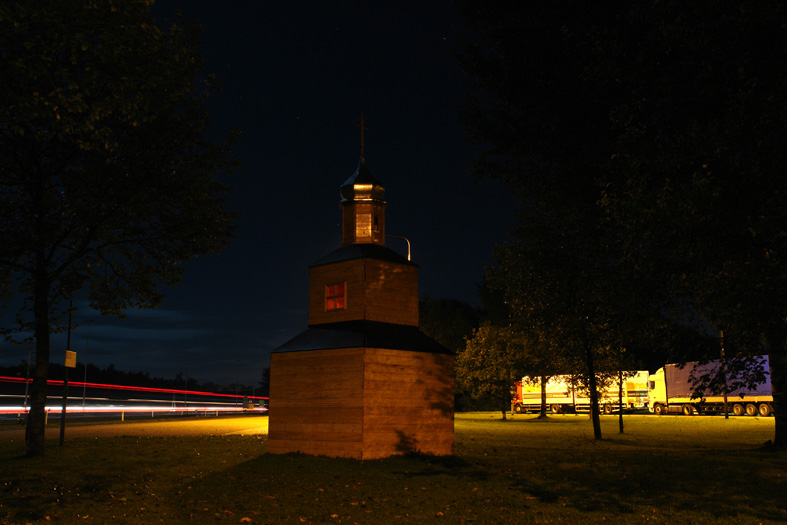
Car Boys
The first Orthodox highway chapel in the Netherlands for car dealers from the East.
Podcast (Dutch)
The A1 Car Boys
Eastern European car traders travel weekly on the highway A1 from Russia to the Netherlands to buy second-hand cars. They are easy to spot every Monday evening. Vans with the BY sign and an empty car trailer. Inside the vans men with militairy hair cuts and a money belt around their neck, who pay for the two day ride. They buy a car on Tuesday morning on the car market to drive it back to the East. Spending four to five days a week driving the A1, these guys can be considered Car Boys, modern cowboys herding second hand cars.
Selling a car in Minsk
Parkscapes A1 was a collaboration of the Province of Overijssel, Rijkswaterstaat and three art institutes Kunstenlab, Kunstvereniging Diepenheim and Kunstcentrum Hengelo to explore new visions in highway design by artists. G.A.N.G. was invited to make a vision and reconized the Car Boys as the pioneers of the emerging highway culture. Together with Rob Groot Zevert, Smets joined a group of Belarusian car traders to learn about their lives on the road.
[masterslider id=”34″]
Orthodox Church Parking Vundelaar
The kick-off manifestation was in the fall of 2006 and consisted of five temporary art works on parking lots along the A1. G.A.N.G. created a Russian rest area on the Vundelaar, where the car boys could spend the night without being chased by the highway patrol and do their prayers in a specially designed Orthodox chapel. The Dutch Orthodox Church blessed the soil to make it a temporary holy ground. Archpriest Theodore van de Voort organised a church ceremony every Monday evening when the Car Boys enter the Netherlands.
The Orthodox chapel was a prototype for a exchange of resting area’s between European countries. By apointing every resting area to an other country the highway would become the intergration accelerator of the European Union.
[masterslider id=”35″]
Location Highway A1 Utrecht – Minks (Belarus)
Period 2006
Team Melle Smets, Rob Groot Zevert
Commisioned by Kunstcentrum Hengelo, Kunstenlab, Kunstvereniging DiepenheimFunding Provincie OverijsselSponsor Tauw advies- en ingenieursbureauIn collaboration with Ekaterina Mitichkina (translator), Archpriest Theodoor van der Voort (inauguration chapel)Special Thanks Svetlana (catering), Vazzek (contact person Minsk), Cees Elzenga (photographer)…
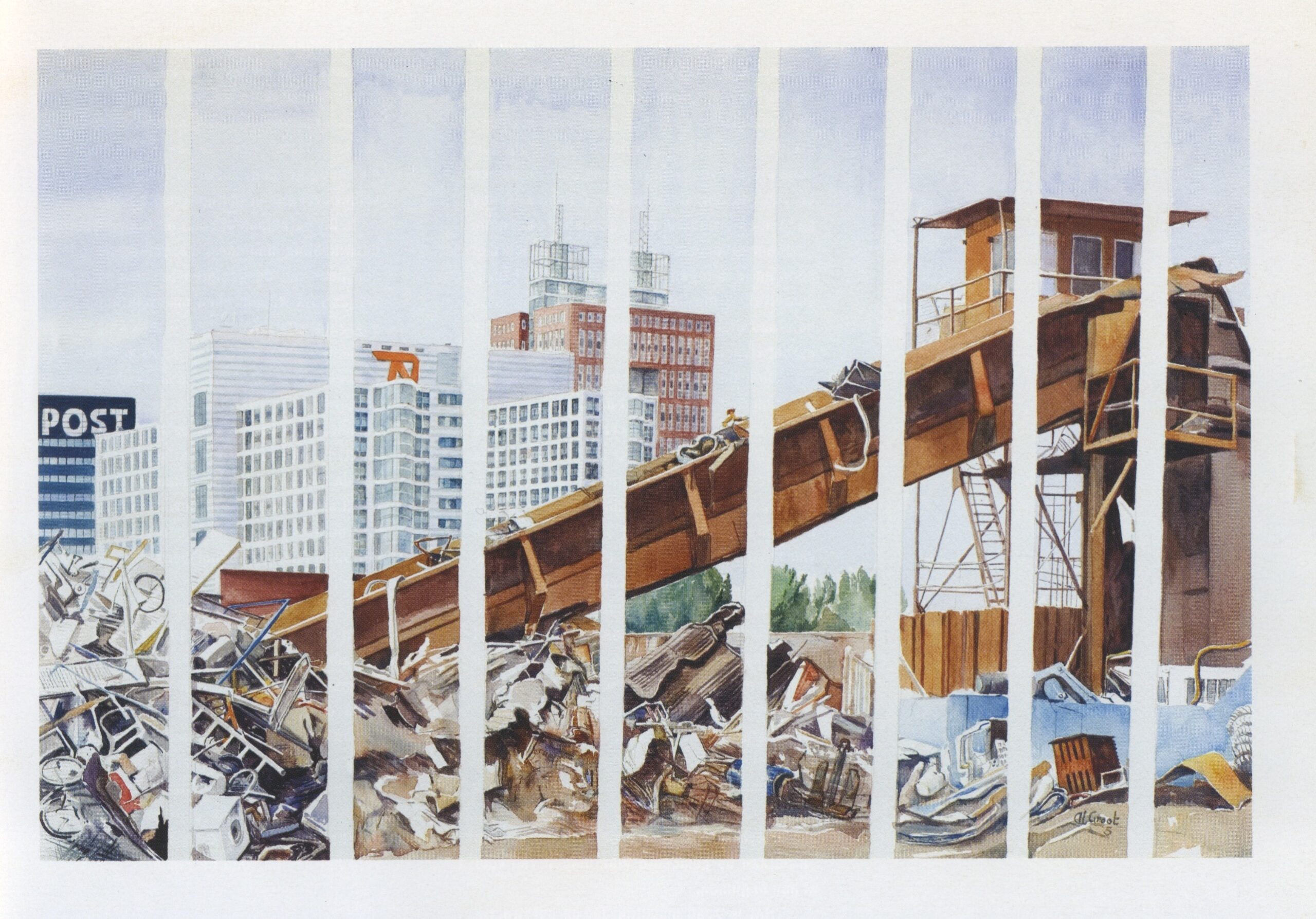
Binck!
A charm campagne for the last free zone of The Hague.
Podcast (Dutch)
Every resident of The Hague visited the Binckhorst industrial district at some point for a second-hand car, the car wash, or a new exhaust pipe. The Binckhorst used to be the Mecca of cars and car wrecks, full of scrap yards, showrooms and garages. But there was much more below the surface. For a century, the district grew as a dumping ground for anything and anyone who was no longer welcome in the regent city of The Hague. From whore houses, gypsy cemeteries, boat homes, to air force bunkers, illegal churches, and garbage recycle centres.
In 2005, De Binckhorst was about to undergo radical changes. The site is close to the old city centre and the municipality wanted to transform the area into upmarket offices and residential towers. Previous residents and entrepreneurs were pushed out, which meant that the last free zone of The Hague was disappearing. Dismantling free zones such as De Binckhorst is fatal for the intricate social network of the city where rich and poor meet for hobbies, repairs, innovation and rendezvous. This kind of social capital is invisible and cannot be expressed in any monetary value.
[masterslider id=”32″]
Charm campaign “Binck!”
Smets designed the charm campaign “Binck!” to highlight this social capital. In collaboration with art in public space institute Stroom Den Haag he set up a year-long program full of excursions, workshops, exhibitions and network meetings, culminating in a large public manifestation on Saturday September 17, 2005. On that day, visitors would visit all companies and wastelands under the guidance of experts or locals. An amusement park train ran through the neighbourhood, and the glossy magazine Binck! was presented. Binck! became (and still is) a brand promoting the Binckhorst as a unique freezone in the city.
[masterslider id=”33″]
Publication Binck! The best kept secret of The Hague
The glossy magazine “Binck!” portrayed the Binckhorst in a time frame of one year. A team of experts mapped the area gathering personal stories, reading the scars in the landscape, reviewing the quality of food stalls and unravelled what was happening behind closed doors. Binck! became a unique record of the neighbourhood in 2005 and is a plea for a freezone in every city; since it serves as the city’s lungs.
Edition: 5.000
ISBN-13: 9789073799486
Copies: 5000
[masterslider id=”107″]
Edition: 5.000ISBN-13: 9789073799486
Location Binckhorst, Den Haag
Period 2005
Commisioned by Stroom H.C.B.K.Funding Gemeente Den Haag, Stimuleringsfonds voor ArchitectuurSponsor Delta HageIn collaboration withMagazine editoral board: Tijs van den Boomen, Cassandra Wilkens, Manifestation editoral board: Qenep, Jan Wijle, Melle Smets Graphic Design: Pier TaylorProduction: Saskia Hamel Event design: Jan Körbes & Denis Oudendijk Guided tours: Willem Marijs, Jan Brouwer, Louis Kanneworff, Filip Mens / BNA Haaglanden, Gerdien BlankensteinMascotte: Els RoseboomSpecial thanks AVR, Bedrijvenvereniging BLF, Europcar, gemeente Den Haag (DSO en DSB Straten & Vegen), HTM Infra, Lindblom public relations-public affairs, Maison Kelder, Meeuwisse Nederland BV, Medisch Centrum Scheveningen, Michael Mellema, Nadorp Makelaars, Sionkerk, Smart Center, Els Roseboom en vele anderen.…
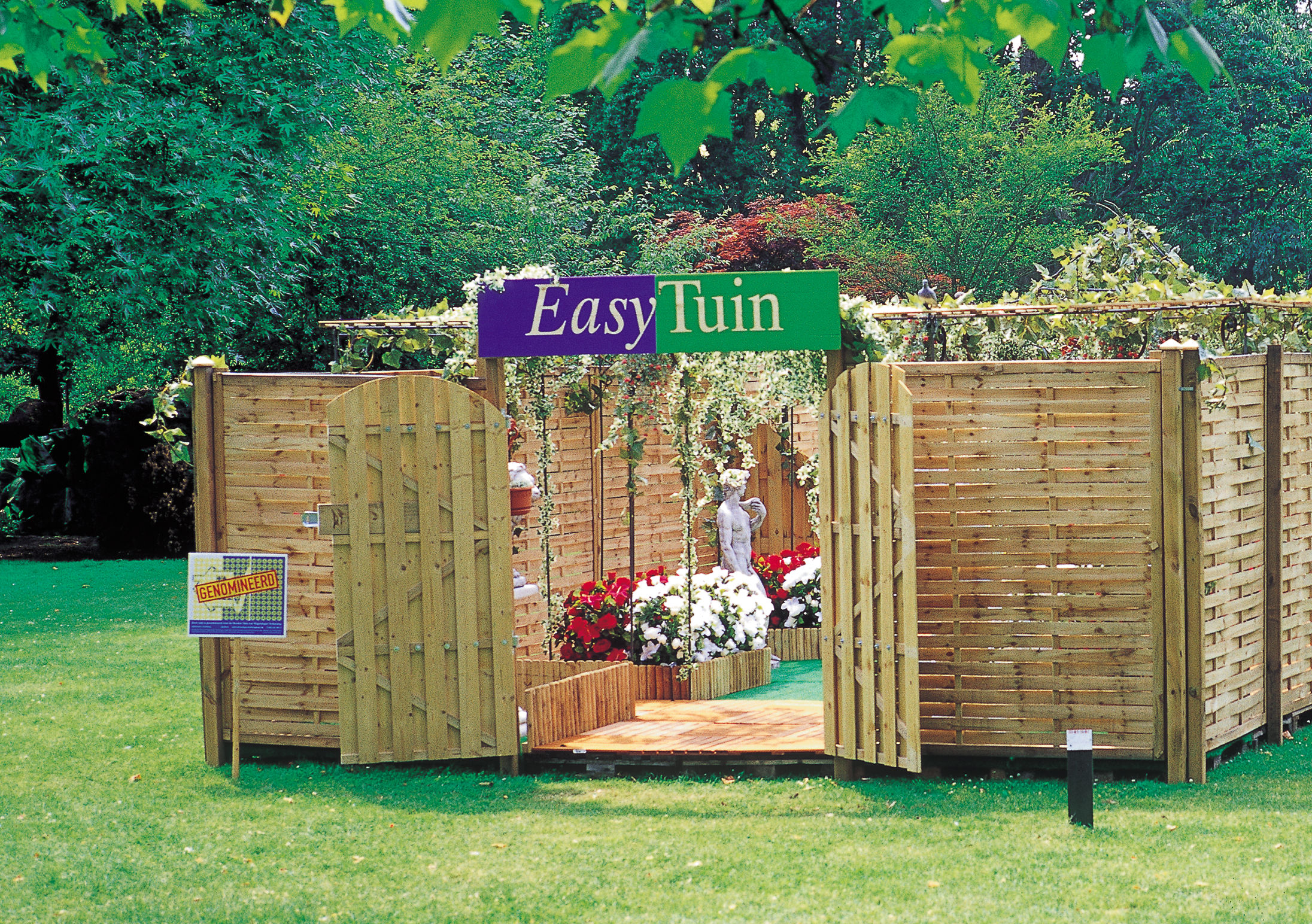
Easy Garden
A campaign for the ‘Best front yard of the city’.
Podcast (Dutch)
From June 7 to September 13, 2003, the 8th edition of Wageningen’s Beelden op de Berg took place under the title Dreamscapes. Artists and landscape architects visualised their ideas for the future artificial landscape. GANG’s intervention consisted of two parts. The ‘Easy Garden’ full of plastic plants was installed in the Arboretum, and a garden competition for ‘The best garden in Wageningen’.
[masterslider id=”30″]
The jury nominated 20 gardens in Wageningen as ‘the Best garden in Wageningen’. Each nomination received a real-estate billboard in the garden that read ‘NOMINATED’. The awards were displayed in the Easy Garden. From here visitors could take a bike ride along the 20 nominated gardens. The city of Wageningen was kept in suspense for 2 months. The award ceremony was attended by indignant Wageningers to support the nominees. Three winning prizes were sponsored by sculpture foundry De Rode HAAN; a flower box ‘Baroque Koko’, a 1.5 m rearing horse, and the main prize was a man-sized frog fountain.
[masterslider id=”31″]
The winner of ‘The Best Garden in Wageningen’ was Mr. Bullinga from Dahlia Street. Bullinga had returned his garden to public space by removing the garden fence and laying the paving stones up to his front door. The jury report: “Mr. Bullinga lifts the twilight zone between private and public. By extending the street to the facade, he enlarges the public space. May the attitude and decisiveness of Mr. Bullinga be an example for the citizens of Wageningen.”
The inauguration of the frog fountain was done by councillor Tineke Strik. Today still, the whole street enjoys the fountain and the extra wide sidewalk in front of Mr. Bullinga’s house.
[masterslider id=”119″]
Location Landschapspark Arboretum Belmonte, Wageningen
Period September 2003
Commisioned by Dreamscapes – Beelden op de Berg 8Team Melle Smets, Hans Jungerius, Rob Groot ZevertSponsor Sculpture foundry ‘De Roode Haan’Photography Jeroen MushSpecial Thanks J. Bullinga…
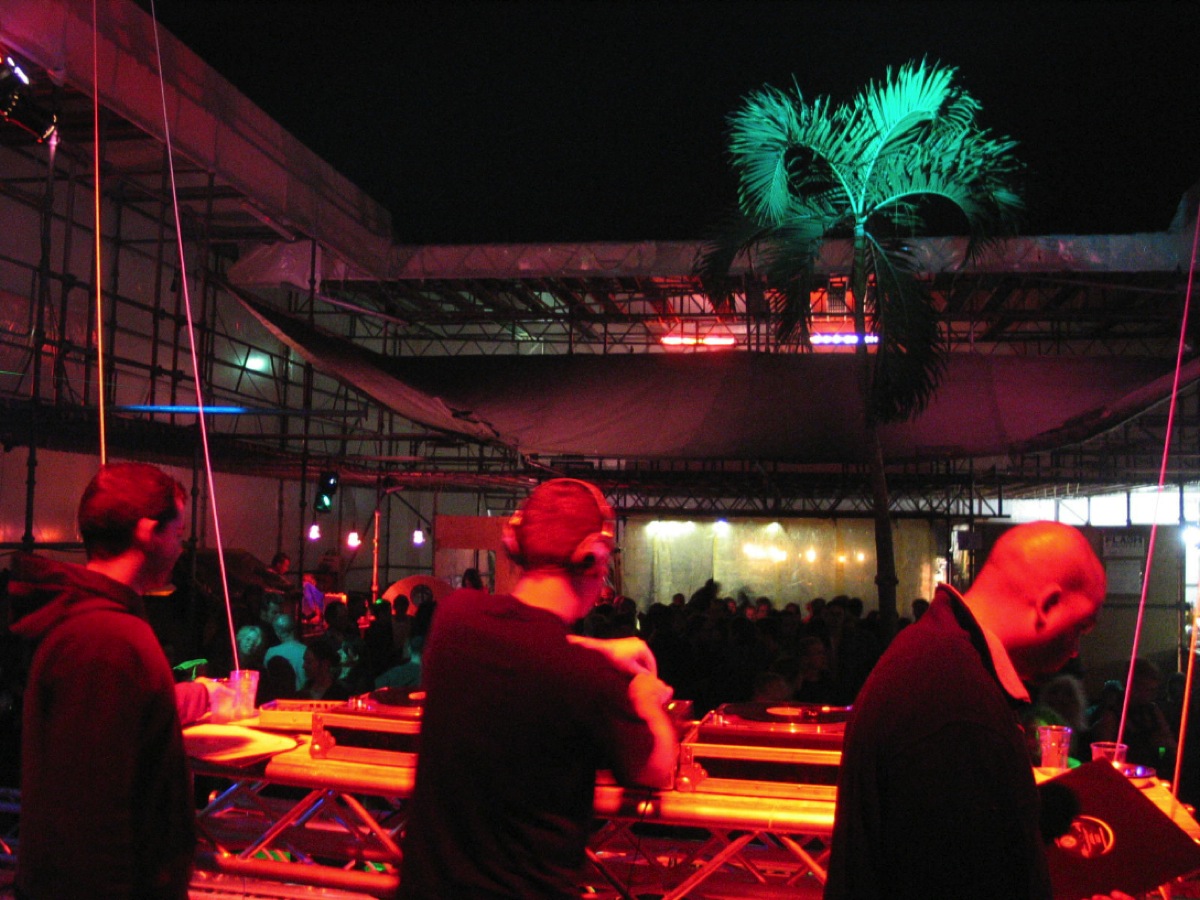
Leisure Resort Parallelweg
An all inclusive weekend to a business park viewing the A12 highway.
Podcast (Dutch)
G.A.N.G. already organised many day trips with P-travels to footloose landscapes such as shopping malls, brain parks, fast-food strips, and the highway. In short, the parallel world. As a follow-up to the day trips, G.A.N.G. set up Leisure Resort Parallel//road. Overseeing the A12 highway from the industrial park the Nieuwgraaf, the resort offered the audience the chance to spend some time in the parallel world.
[masterslider id=”53″]
Impression of industrial park the Nieuwgraaf
Over thirty artists, designers and performers contributed to the resort. Together, the installations and performances formed a temporary and unique holiday park to enjoy the good, rich life that exists along our highways.
Leisure Resort Parallel//way offered weekend packages. There was a first class restaurant ‘Trailer Made (T.I.R.)’ in the back of a truck, and ‘St. Hubertus’, an outdoor beer bar overseeing the AVR garbage furnace on the horizon. In the evenings you could visit the stylish casino ‘Royal’ or enjoy the varied entertainment in the exclusive ‘Club Zeth’.But the active vacationer was not forgotten either; for them we developed a survival trip through the unexpected nature and forgotten wilderness behind the many distribution centres. With the ‘POP-UPS’ performance evening, sitting on a driving grandstand, the distri park became the backdrop of modern dance theatre. All was possible in Leisure Resort Parallel//away!
[masterslider id=”54″]
Period 2003
Location Bedrijventerrein Centerpoort, A12 – Duiven
Team Hans Jungerius, Melle Smets, Rob Groot Zevert, Jur van Diggele, Jacco van der Post, Eva van Ginhoven, Peter Goudriaan, Clare Dowling
Funding Gemeente Duiven, Stichting VSBfonds, Provincie Gelderland, Prins Bernard Cultuurfonds Gelderland, Cultuurfonds van de Bank Nederlandse GemeentenSponsor SGB steigerbouw, Rentokil, Palletfabriek Derksen Pannerden, Velocity Fietskoeriers, Hotel Haarhuis, Café Vrijdag, Café VerheijdenIn collaboration with Remi Angel, Merija Ajeti, Ozlem Altin, Victor v.d. Berg, Gilles Biesheuvel, Lorenzo Borella, Kevin van Braak, Miriam Bouw, Daniëlle Bouwmeester, Tony Burjat, Peter Cleutjens, Hendrik Derksen, Quinten Dierick, Juriaan van Diggele, Bas van Doorn, Leonka Gold, Attilla Gonczi, Jaap Hagen, Jessica Helbach, Rosell Heijmen, Dominique van Hoof, Arand Hovakimian, Bing Ie, Hans Jungerius, Pim Koppers, Klaas Kuitenbrouwer, Lydia Lambrechts, Aldwin Lehr, Cecília de Lima, Erik Lucas, Iris Marko, Boris van Nes, Twan van Oosterhout, Oscar Prinsen, Riette van Rooij, Kroko Schilte, Floris Schoonderbeek, Gert Jan Schouten, Hannes van Soest, Peter Stel, Chris Summers, Rob Sweere, Ronald Ubbink, Raoul de Vries, Imelda Westerhof, Murat Yildiz, Mioko Yoshiahara, Marjol Zibaya…
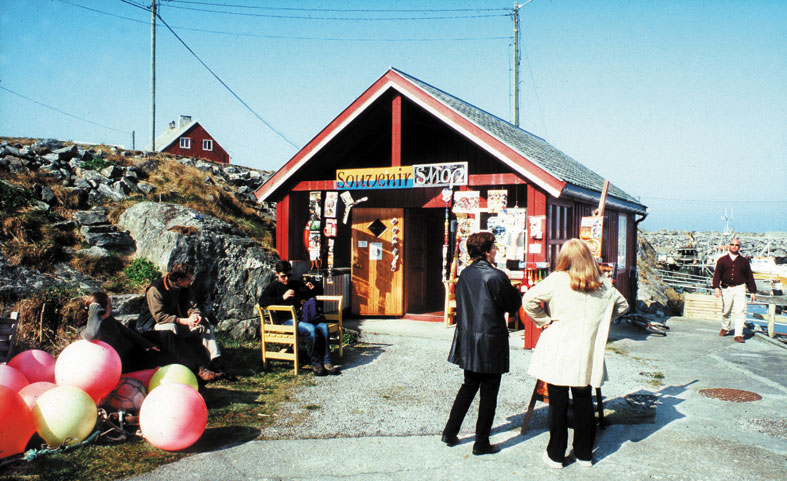
Genuine Souvenirs
A souvenir shop sells washed up waste from the Atlantic in handmade packaging to cruise ship tourists.
Podcast (Dutch)
For 3 months, Smets stayed on the former Norwegian fishermen’s island Ona. With only the coast guard from the lighthouse and the grocery shop owner as neighbours there was not a lot to do other than walking around the island.
During the daily stroll, Smets noticed the growing carpet of the refuse of civilization; plastic bottles, spray cans, ropes, pieces of lifeboats. With every walk he brought a piece home and built up a whole collection. In spring the former fishermen families who once lived on this island, came to Ona to clean up the coastline and burn the plastic. This yearly ritual is done before the cruise ships arrive to consume the picturesque scenery. Smets set up a souvenir shop in the harbour, designed wrappings for the cultural dissidents and sold them to visiting tourists as genuine souvenirs in the harbour.
[masterslider id=”26″]
Period 2003
Location Ona Art Center, Ona (Norway)
Funding Fonds voor Beeldende Kunsten, Vormgeving en Architectuur
Special thanks Adrianne van Diggele
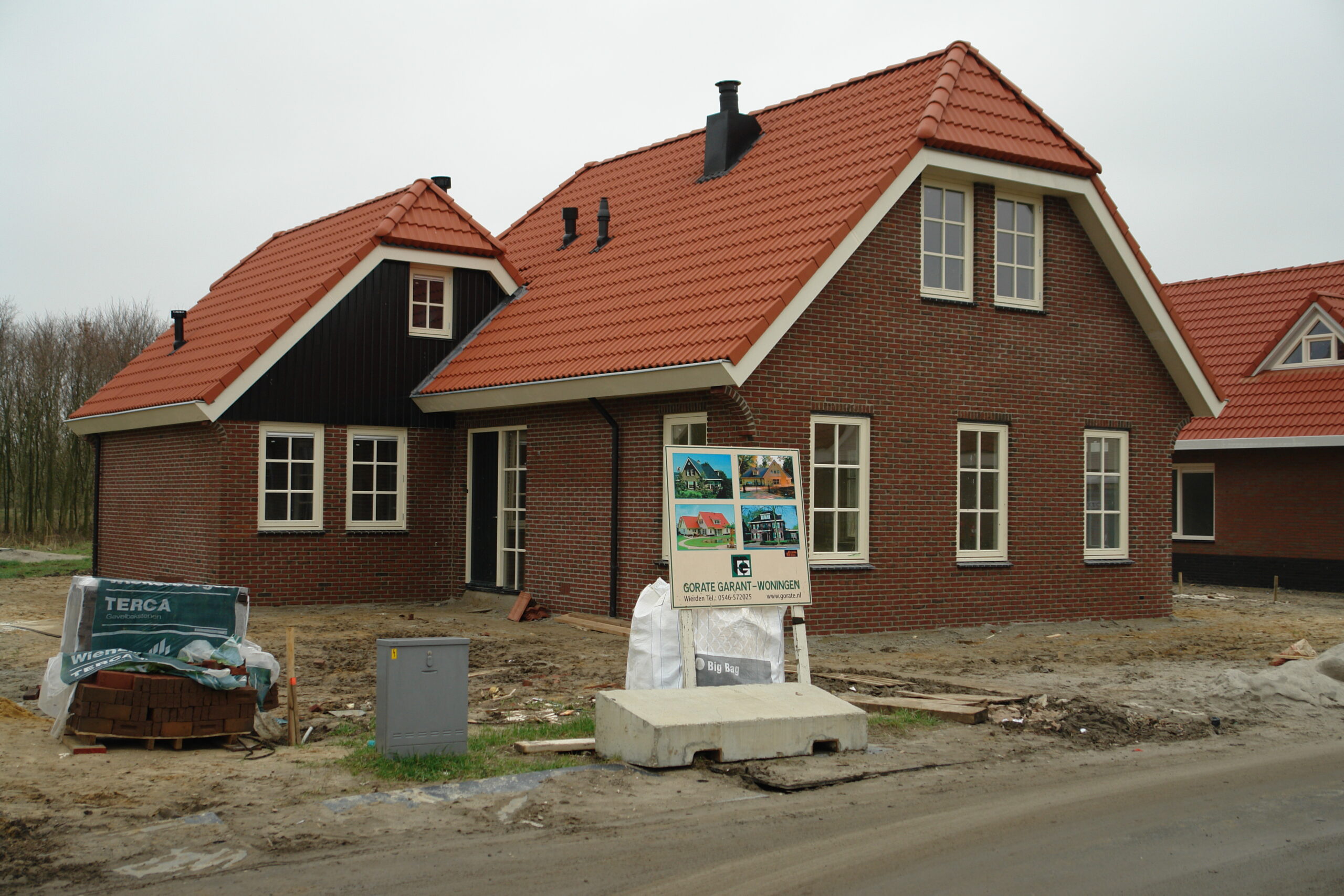
Beyond the Farm
A short documentary investigates how farm life became an affordable lifestyle product taking over the landscape in the East part of the Netherlands.
Podcast (Dutch)
The farmhouse has become a popular refuge for the city dweller who seeks the peaceful rural lifestyle. Now that the old farm houses are sold out in the countryside of Gelderland, farmlike homes pop up everywhere in a brand new leisure landscape where the nostalghic idea of living on a farm is disconnected from its actual labour, smell and noise. In the short documentary Beyond the farm we visit this parallel world of lifestyle farm markets, pancake restaurants, gated communities with farm villas, and many new forms of outdoor entertainment.
[masterslider id=”28″]
The documentary Beyond the farm was linked to the Museum for Contemporary Art Arnhem. The visitors could experience the farm lifestyle in an interactive installation.
[masterslider id=”29″]
Location Arnhem
Period May 2002
Team Melle Smets, Hans Jungerius, Rob Groot Zevert
Partner & funding TV Gelderland
Exhibition Museum of Contemporary Art Arnhem…
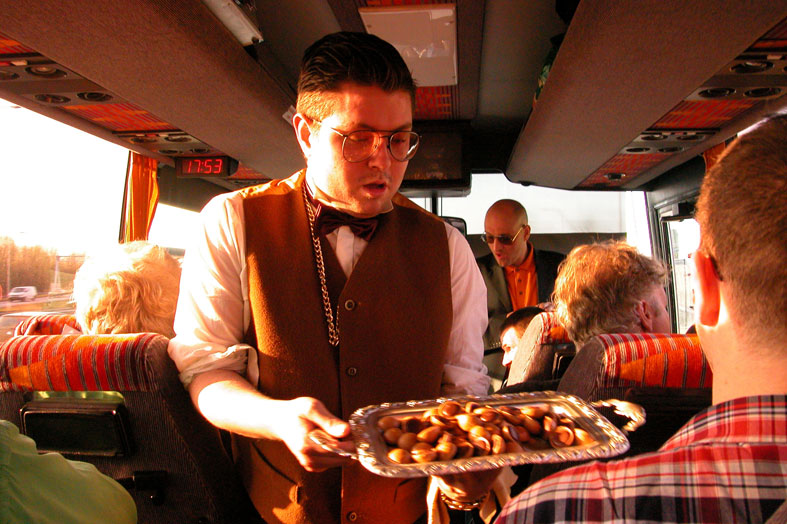
P-Travel
Trips to the Parallel World. Destinations where other tour operators don't talk about.
Podcast (Dutch)
P-travel agency (P-reizen) organised day trips and overnight expeditions to the ‘Parallel World’: the ‘footloose’ landscape of industrial zones, districenters, harbours, shopping malls and airports, for which the highway serves as a backbone. The parallel world is a spectacular landscape right in front of us, but still a destination other tour operators won’t talk about.
Artist collective G.A.N.G.’s set up the travel agency to offer the audience a genuine footloose experience.
From the P-travels brochure:
“The city has stretched thin. For functions such as living, working and recreation we cover ever greater distances through a landscape that is silting up unnoticed with mobility systems and uniform mono functional zoning. Places become interchangeable since the activities we undertake are independent of a location. We’re moving into the parallel world in which old places lose their meaning but new footloose places of interchangeable meaning arise.”
The travel agency offered a wide variation of guided tours through the Netherlands from 2001 till 2005.
Here a selection:
2005 P-trip Botlek
P-travel organised a trip for the Festival of Delights (Heerlijkheidsfestival) in Hoogvliet. Hoogvliet is a residential neighbourhood of Rotterdam and is situated in the heart of Holland’s most spectacular footloose landscape, the Botlek harbour. This heavy industrial area houses the largest oil refineries and is the biggest container hub of Northwest Europe. The trip guided the guests through this ever-changing environment where nothing is what it seems, as what might have been a functioning road yesterday, could be part of the harbour tomorrow.
[masterslider id=”94″]
2004 Gated Communities
The Netherlands has a very strict urban and landscape policy to prevent exclusion and to assure that public space continues to be open to the public (integrally).
The rise of the parallel world undermined this principle. For example the gated community does exist in the Netherlands. It’s subtle in design, so the gate and walls are less apparent, but it is still a form of segregation. In collaboration with Flakland Studio, P Travels organised a day trip visiting varieties of Dutch gated communities. From an upmarket residential tower in the city, to holiday home parks, elderly care homes, and squatter communities.
[masterslider id=”93″]
2004 The Land of Oer
Next to the canalised river Oude IJssel is the largest antique-selling street of Europe, where all sorts of antique dealers set up shop in former farms and factories. These ‘nostalgia farmers’ have stretched the term ‘antique’ to an unprecedented scope. Things don’t even have to be old to be sold as ‘antique’: new antiques are brought in from China by container.
P-travel proclaimed during the manifestation “Archipuncturale” to rebrand the Achterhoek area to ‘t Land van Oer. With a newly designed map of the area solely focused on antiques, P-reizen organised a full arrangement day trip through ‘t Land van Oer to learn about contemporary nostalgia.
[masterslider id=”92″]
2003 Amsterdam as it is!
P-travel opened its first travel agency in the heart of Amsterdam, at the Ruysdaelkade between the Rijksmuseum and the Heineken experience. Here tourists could book a day trip to the real Amsterdam. Destinations: Schiphol airport or just a circle city tour on the A10 highway.
[masterslider id=”90″]
2002 Circling NL camper tour
P-travels set up a studio in a mobile home. For two weeks the camper van drove around the Netherlands in search of the Parallel frontier. The studio was visited by the Dutch television program Markant Nederland. An international group of art students joined the studio for a workshop by KaAP (ArtEZ). The student team did extensive fieldwork for new P travel locations.
[masterslider id=”85″]
2002 Vinex safari
P-travel organised a hiking tour to the VINEX suburbs of The Hague. This designed urban expansion has a repetitive grid of housing, streets and canals. . The old landscape is wiped off the face of the earth. After a whole day of walking, the neighbourhoods form a never-ending labyrinth. To escape the future, the only way out is through the water ways, remnants of the old landscape.
[masterslider id=”89″]
2002 Brain Park tour
The economic boom of the nineties caused a vast increase of real estate development in brain parks. Within the context of the Day of Architecture in Hilversum, P-travel organised a tour per luna park train over the local business area. During the ride, the sales brochures that once promoted these offices were read to the visitors in the train.
[masterslider id=”86″]
2002 Indoortainment
P-travel designed a tour for Stroom Art Center through the indoortainment of outdoor experiences in and around The Hague. This phenomena popped up in every industrial area where industrial barns were transformed into tropical swimming pools, cart race tracks, paintball arena’s, etc. In these make-believe worlds people train for all kinds of adventures they will probably never actually experience. P-travellers were offered a once-in-a-lifetime opportunity to visit all parallel worlds in just one day, from the highest mountain to the deepest ocean.
[masterslider id=”87″]
2002 Forest show A9
P-reizen was invited by the Amsterdam Fund for Visual Arts to make a future vision for Amstelland. Amstelland is a green lobe that runs like a finger to the southern edge of Amsterdam, but is intersected by the A9 motorway. The ‘dyke’ on which the highway is located has a height of approximately 6 metres and a width of about 40 metres. The plateau turned into a forest over the years and became the setting for raunchy rendezvous, illegal motocross, and features numerous voodoo-like objects for target practice with bow and arrow. On Saturday 21 June 2003, P-reizen opened the ‘Forest Show A9’ here, the first parallel world forest in Europe. Visitors could follow the signs and enjoy a spectacular view over the A9 at the end of the tour.
[masterslider id=”91″]
2001 Mobile urban leisure park
P-travel set up a base camp in the industrial park De Nieuwgraaf in collaboration with the Academie Bouwkunst Arnhem (University of Architecture). P-travel made participants stay an entire week and organised day and night expeditions to the De Nieuwgraaf alongside the A12 highway. Its mission was to research the potential of ‘industrial parks’ as a new format in urban design.
[masterslider id=”88″]
2001 Constructing history
The Flevopolder is a man-made polder at the southern end of the South Sea (Zuiderzee) that was to become industrial farmland. Now, half a century later, the planned villages have expanded into large suburban developments. The settlers seek for authenticity in this rational planned landscape. P-travels organised a day trip to the newborn historic places in the Flevopolder, like Batavia City (Batavia Stad), Prehistoric village Swifterband, and Almere castle.
[masterslider id=”83″]
2001 Leisure society
P-travel’s first tour set out for the Leisure society alongside highway A12 where leisure landscape of indoor playgrounds, shoppingmalls, gated communities, gay meeting spots, and luna parks had emerged. The bus trip ended in Kernwasserwunderland, where scrap dealer and luna park developer Hennie van de Most turned a former nuclear plant into a playground.
[masterslider id=”84″]
Period 2001 – 2005Team G.A.N.G.: Hans Jungerius, Melle Smets, Rob Groot Zevert, Jur van DiggeleCommisioned by Stroom HCBK, W.I.M.B.Y., Municipality of Den Haag, department D.S.O., Dudok Centrum Hilversum, Academie van Bouwkunst Arnhem, KaAP, H.K.A., Stichting Architectuurlokaal, Stichting Kunst Openbare Ruimte, Ministerie Verkeer en Waterstaat, BAM, Nirov, TU DelftFunding Province of Gelderland, Fonds van BKVB, Municipality of Arnhem, VSB Fonds, Prins Bernhard Cultuurfonds, C.S. OolgaardtstichtingIn collaboration with Altwin Lehr, Kroko Schilte, C.I.A.
Commisions & fundings
P-Travel – Constructing History 2001Commisioned by Stichting Architectuurlokaal
P-Travel – Mobile urban leisure park 2001Commisioned by Academie van Bouwkunst Arnhem
P-Travel – The Forest show 2002Commisioned by Stichting Kunst Openbare Ruimte
P-Travel – Circling NL 2002Commisioned by Studium generale KaAP
P-Travel – Brainpark Tour 2002Commisioned by Dag van de ArchitectuurFunding Dudok Centrum Hilversum
P-Travel – Indoortainment 2002Commisioned by Stroom HCBK
P-Travel – Vinex Safari 2002Commisioned by Municipality of Den Haag, department D.S.O.
P-Travel – Amsterdam as it is… 2003Commisioned by Stichting Kunst Openbare Ruimte
P-Travel – Gated Communities 2004Funding Province of Gelderland, Fonds van BKVB, Municipality of Arnhem
P-Travel – t’Land van Oer 2004Commisioned by Stichting voor Kunst en Cultuur Gelderland
P-Travel – Botlek 2005Commisioned by Ministerie Verkeer en Waterstaat, BAM, Nirov, TU Delft
…
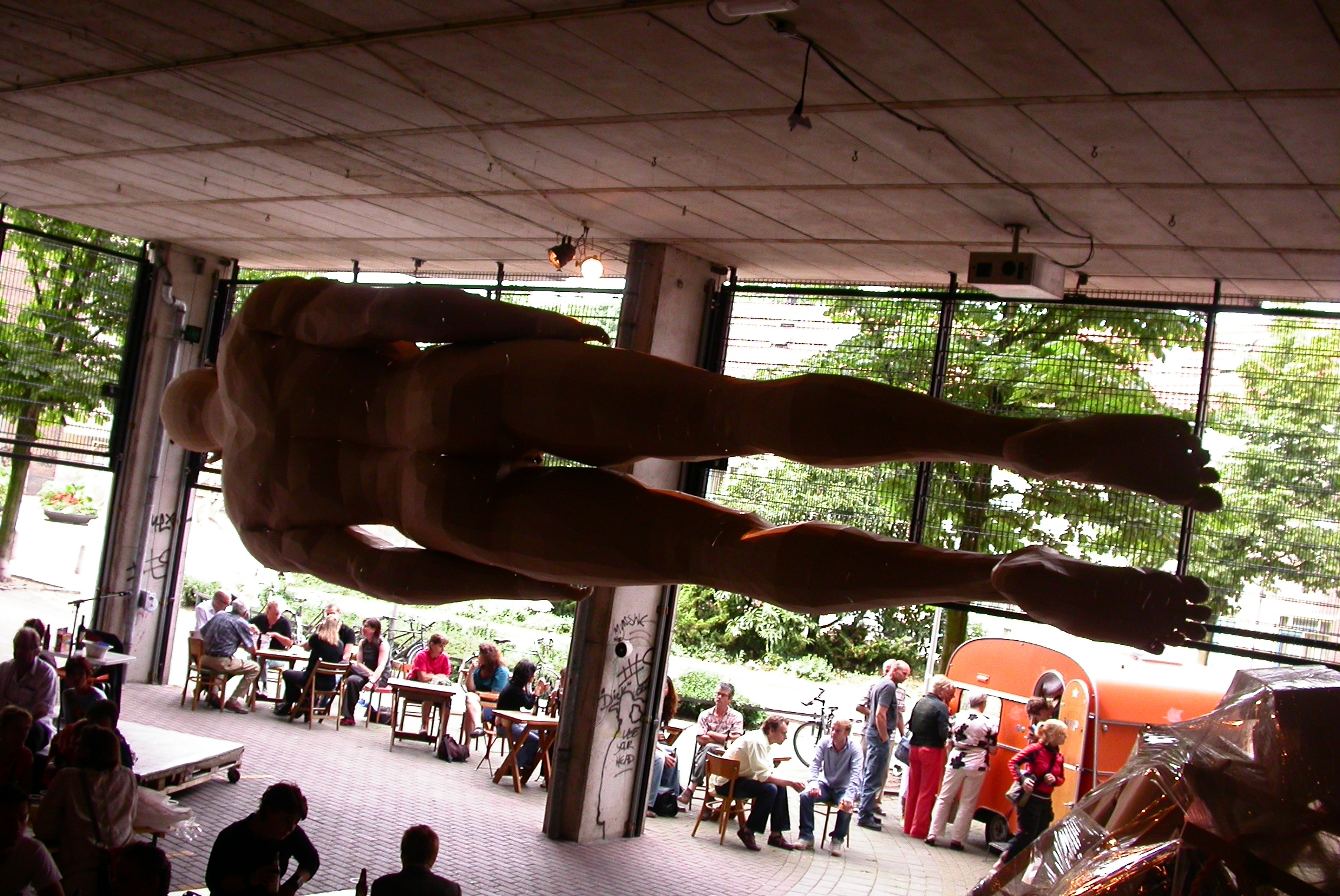
Showroom G.A.N.G.
Resuscitation of a hole in the city.
Podcast (Dutch)
G.A.N.G. was an artist collective founded in 2000 by Hans Jungerius, Rob Groot Zevert, Jur van Diggele, and Melle Smets. Smets was one of the driving forces from 2000 to 2005. As four graduates of the department OK5 Art in Public Space (Hogeschool voor de Kunsten Arnhem), the binding factor was the fascination for the expanding spaces of transit such as highways, business parks, shopping malls and airports. These are no longer singular occurrences but start to form a parallel world of untethered landscapes with the highway as their backbone. If people spend more time here than at their final destination, how can art turn this non-place into something meaningful?
G.A.N.G. grew into an artist’s initiative that operated as a design agency for art in public space. In 2001, P-travels was founded, offering day trips and expeditions to the Parallel World. In addition to these “Out-Door” activities, G.A.N.G. claimed a pedestrian passage under the Langstraat parking garage in the centre of Arnhem. This public corridor, the size of a sports hall, could be closed with a self-designed portcullis of 22 x 5 metres. When the gates were closed, the corridor turned into an experimental place for exhibitions, film screenings, theatre, debating and even had a food market.
[masterslider id=”11″]
Here’s a selection of manifestations and experiments from 2000 till 2005:
2000 ZUMMER: Resuscitation of a blind spot in the city
Somewhere in the sixties, right underneath the parking garage Langstraat, a pedestrian underpass was planned that would connect the city’s shopping area with the boulevard along the Rhine. The ambitious city plan was partly executed, but the underpass never turned into a shopping street. Instead, it became a youth hang-out to smoke blunts, burn garbage, and dump stolen bicycles. G.A.N.G. saw the potential to turn this urban failure into the cultural heart of the city with ZUMMER: The resuscitation of a blind spot in the city.
[masterslider id=”120″]
The ZUMMER-intervention consisted of three weekend events in the summer of 2000. Artists invaded the space with their artworks and transformed the concrete cave into a visual feast of projections, installations and performances. Artists literally crawled into the darkest corners of the parking garage to set up shop. Monday morning everything was gone as if nothing happened. The experiment worked. The media covered the event at large which brought attention to the many back alleys of Arnhem. The city council agreed the underpass needed a face lift.
[masterslider id=”10″]
2001 KXvNX: The dynamic city as a backdrop for experiences
KXvNX (DIY thrills) took place from 3 to 19 August 2001 as part of the Sonsbeek exhibition. Under the slogan ‘the dynamic city as a backdrop for experiences’, artists were invited to design free thrills. The entire pedestrian underpass was filled with a grid made of scaffolding cubes of 2.5 x 2.5 x 2.5 metres. Each cube became a KXvNX-experience and the connecting corridor grew into a city within the city. The event showed the potential of the underpass as an art space and the G.A.N.G. collective gained the trust of the municipality to come up with a more permanent plan.
[masterslider id=”12″]
2002 Portcullis: “Can You Fix Me?”
G.A.N.G. gained control over the underpass in 2002, making this urban failure into an exhibition space. What was officially public space now became an experimental playground for artistic interventions. The underpass could be closed off with an ingenious portcullis, so that temporary exhibitions, markets, theatre and music performances could take place. The first experiment was “Can You Fix Me? beauty clinic Change”, held in the summer of 2002.
Modern man longs for the ‘perfect body’. What this body would look like formed the basis of the multidisciplinary dance and theatre performance “Can You Fix Me?” that took place in the beauty clinic “Change”. The dancers and set designers worked together in the semi-public project space. The dancers interacted with the set props and gradually transformed the space into a beauty salon. Bypassers could follow the developments from behind the fence, which culminated in the festive opening of Beauty clinic “Change” in an evening-long performance.
[masterslider id=”13″]
2003 Showroom G.A.N.G.
After three years, the ‘hole in the city’ grew into Showroom G.A.N.G. The former public space became a site for artistic experiments. The size of the space and the direct contact with the street allowed artists to create large works and try out spatial installation art. The hall was equipped with a video screen of 8 metres by 5 metres that gave video artists an urban screen. In 2008, G.A.N.G. and C.A.S.A. joined forces and developed the project space into a centre for urban culture. In 2012, G.A.N.G. ceased to exist and C.A.S.A. took over the cultural centre.
[masterslider id=”25″]
Period 2000-2005
Location Parking garage Langstraat, Arnhem
Team GANG: Hans Jungerius, Melle Smets, Rob Groot Zevert, Jur van Diggele
Funding Mondriaan fonds, Fonds BKVB, City of Arnhem, Provincie Gelderland, VSB Fonds, Prins Bernhard Cultuurfonds, C.S. Oolgaardtstichting
Special thanks Peter Michiel Schaap, Joris Lindhout, Maaike Gouwenberg, Jan de Bruin, Immanuel Sirron Kakpur
Partners Artes, Canvas performing art, Sonsbeek 2001, Museum Arnhem, Wintertuin, Hooghuis
ZUMMER (2000) program & collaborations:
PROGRAMMA WEEK 1: 5 augustus
Casus 66 (spoken word extern), Karel Doing ( filmcurator), Rob Groot Zevert (diainstallatie), Hans Jungerius (sandwichbar), Arjan Keesmaat (video), KROKO ( show/bar/entertainment/art), Rob Pas & Edwin Peters (film preformance), Melle Smets (installatie/poort), Matthijs Stegink (instalatie/waterval), Marten Terpstra (diainstallatie)
PROGRAMMA WEEK 2: 12 augustus
Wim van der Aar ( filmcurator) (i.s.m. Jaap Pieters; 8 mm. film), Michel Boekhoudt (geluidsinstallatie), Cecile Reynaud (diainstallatie), Rune van der Cruijsen (object), Rob Groot Zevert (object), Hans Jungerius (video), Jan Katsma (video), Kingztapaz (tapasbar etc.), KROKO ( zie week 1), Johan Kuipers (video), Jacco van der Post & Dennis Firing (internetdrama), Melle Smets (installatienest) i.s.m. Attila Tonczi (performance), Marten Terpstra (diainstallatie), Ronald Ubbink (feedbackinstallatie), Performancegroupe ‘equaterale triangle” (work in progress experence door Nicolas Primat EDWOOD & P.S.:
PROGRAMMA WEEK 3: 19 augustus
Alphons ter Avest (8 mm. installatie), Kim Boekhout van Solingen (hai’tekartist), Gilles Biesheuvel (performance/act), Casus 66 ( spoken word – live), DJ Paul, Rob Groot Zevert ( beeld), Ineke Kaagman (kaugomgrafitti), Hans Jungerius (beeld), KROKO (zie week 1 & 2), Anand Mahabier (wandschildering/videoloop), Inge Pollet ( 8 mm. loopinstalatie), Willem de Vries (videoinstallatie), UNICPS:PIM & JACK ( act/modeshow/videoregistratie) i.s.m. Jacco v/d Post & Dennis Firing (zie week 2), V2_organisatie ( film/videocurator), Joncquil de Vries (installatie/video)
KXvNX (2001) program & collaborations
Hans Jungerius (installatie: chin.ind.spec.rest), Melle Smets (object: Karkas (zit-lig element), Hans Jungerius & Melle Smets (installatie: This is not a lifesaving device), Kroko J. Schilte (installatie/performance: Alles Haaks), Rob Sweere (installatie: Portable site for a conversation with a building), Rob Voerman (installatie: Hotel), Marten Terpstra (dia- projectie: op stel), Yvonne Zijp (computerprint: Straat zonder titel), Bob Gramsma (52 koelkasten (gestript) en parkeerpaal), Peter Stel (Sunblock), Jody van Dongen (installatie / klimobject: The Hangout), Bureau Baklicht (installatie/actie: Botsootoos), Jurriaan van Diggele (muziekinstallatie: Muzak), Hans Wijninga (airport), Mieke Gresnigt (Fotografie: camping ‘de Mars’), J.J.J. Atel-J (performance: J-ZUS EN ZO), Marianne de Vrijer (grafisch vormgeving), Kim Boekhout van Solinge (Caravan ruismachine), Remco Packbiers (cineast) & Gilles Biesheuvel (acteur) met De Mars Speelfilm duur 45 min. Video: Jan Katsma, DM projectontwikkeling, Karel Doing, Martijn Oostra, Aldwin Lehr, Pangea films, Dennis Firing, Hans Jungerius, Chrit Veugen, DJ Paul, DJ’s Siegfried & Roy en DJ’s Katsma en de Vries
Can You Fix Me? (2002) program & collaborations
Cecilia de Lima (Regie), Cecilia de Lima, Lorenzo Borella (I.) en Atilla Gonczi (Hon.) (Choreografie), Melle Smets (Vormgeving), L. Borella, A.Gonczi, A. Hernandez, Y. Jung Kim, S. Kolbe, N. Ladas, S. Roosens, A. Seidler (Dansers), Claire Dowling (Muziek), Maarten Verweij (Grafisch ontwerp), Rob Groot Zevert (Produktie), Jurriaan van Diggele (Techniek)
Showroom GANG (2003) program & collaborations
Melle Smets ‘ Zorgeloos Genieten ‘, (performance act), Kroko Schilte ‘ingewikkelde kunst’ (overzicht werk en performance), Hans Jungerius ‘motel’ (installatie), GBK/CBKN, Ki-osk ‘Daily Art Supply’ (curatoren van kunst en verkoop in mobiele winkel), Pixelpasta ‘videocrapspecialists’ (video-installatie anex VJ’s), Kinga Kielczyňska ‘z.t.’ (live performance), Roomservice ‘parasol’ (leisure-installatie), Boris van Nes ‘signalering’ (schilderijen), Rob Groot Zevert ‘ Tropical Forest ‘ (installatie), Jacco van der Post ‘ Schuilkelder ‘ (installatie), Hans Jungerius ‘bierstube ‘St. Hubertus ‘‘(instalatieve bar), Ronald Ubbink ‘IDEA’ (anonieme deelname), Melle Smets ‘ Zorgeloos Genieten ‘, (video), Jurriaan van Diggele ‘Magic Island ‘, (video), Aldwin Lehr alias Mr. Z. ‘Iraqi Video Yahzin &Turk Video Öksöz ‘(performance en installatie), Rob Voerman ‘ Camouflage ‘ (installatie), MINT ontwerpers ‘Polizeiamt’ (grafische installatie; transformatie g.a.n.g.-kantoor.), Jurriaan van Diggele ‘BAR-ROYAL’ ( installatie / ontmoetingsplek g.a.n.g.), Martijn Oostra ‘People’s Christmas’ (video), Partijloos.nl ‘normen-en-waarden-munt’ (conceptuitvoering & video-interviews) Kunstenaarsgroep Bliep ‘toer!’(actieve-multimedia-installatie), Rob Groot Zevert ‘blindgangers’ (video/ bewakingscamera), Weihnachtsmarkt (20 kunstenaars verkopen kunst; schilderijen, foto’s, etsen etc.)
Showroom GANG (2003-2005) program & collaborations
Organisation: Rob Groot Zevert, Factor 12 (Elske Revelman de Vries Lorena Wilms, Eva van Ginhoven), Jur van Diggele, Mariël Hoogeslag, Melle Smets
Artists: Alphons ter Avest, Arno Arts, Helmut Schmits, Kevin van Braak, Marcel Kronenburg, Marcel Smink, Matthijs Stegink, Rob Voerman, Sander Luske Performance: Desiree Hammen, Dj Keu, Hannes van Soest & Jeroen Diepenmaat, Hans Walraven, Harold de Bree & Thom Vink, Josepha de Jong, Kroko J. Schilte, Kutkoks, Marco Grritsen, Melle Smets, Petra Bouwens, Roos Versteeg, Ruben Veenstra, Weltbummler 666Video: Ada Dispa, Ari Versluis & Ellie Uyttenbroek, Claire Bolt, Floor Adams, Inge Pollet, Jerome Symons, Marieke Scheijgrond, Sandberg Instituut (éénminutenfilmpjes), Sil van der Woerd, Komma 4, Magpie Music Dance Company